Breaking Through
Interdisciplinary researchers confront some of life’s most challenging medical conditions


Interdisciplinary researchers confront some of life’s most challenging medical conditions

Whether you're visiting for a weekend or working remotely at the beach, make UC Santa Barbara your summer home
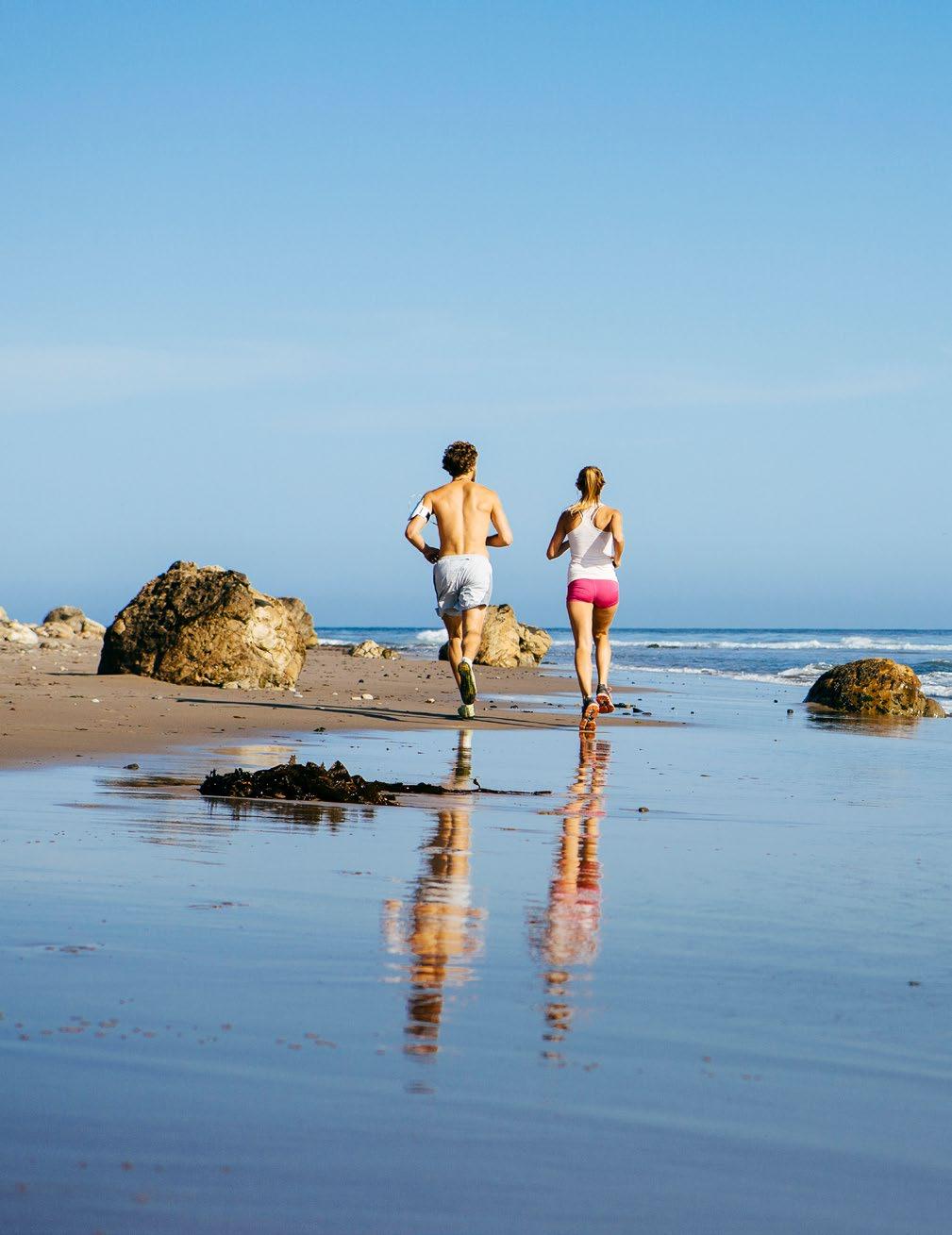
Rates starting at $110 per night.
The UC Santa Barbara Summer Inn offers affordable accommodations for seasonal guests visiting campus. The inn's private, residence-style rooms feature great views of the university. Guests can enjoy sun, sand and surf with friends and family at Goleta Beach, or the tide pools and bluffs along Isla Vista's shoreline.
alumni.ucsb.edu/vacation/summer-inn








Where does our curiosity come from, and how do we satisfy it? What pushes us across that unpredictable intellectual bridge — despite missing rungs, headwinds or whiteout conditions — from wondering to knowing to understanding?
It’s a past experience that we just can’t shake, that sparked a question we’re determined to answer. It’s a personal and emotional connection that ignited an insatiable thirst for progress, for change. It’s an indefatigable drive for discovery that we can’t really explain, but absolutely must fulfill.
Connecting curiosity to academic inquiry, groundbreaking 20th-century author and cultural anthropologist Zora Neale Hurston characterized it this way: “Research is formalized curiosity. It is poking and prying with a purpose. It is a seeking that he who wishes may know the cosmic secrets of the world and they that dwell therein.”
For some of us, it’s all of these things and more.
These varied dynamics are reflected in our new issue. From the medical researchers we have highlighted to the alumni we have profiled and the features reported inside, curiosity is a connecting thread. Whatever their respective wellspring or focus, a remarkable intrinsic motivation powers the individuals you’ll read about. And they are each impacting our world.
Here’s to your own curiosity, your own seeking, and your own journey across that bridge.
Thanks for joining ours,
Shelly Leachman ’99 EXECUTIVE EDITOR

Interdisciplinary researchers confront some of life’s most challenging medical conditions

35 Mending Old Fences
Two diverse people with connected stories come together for a greater good
38 In Search of the Origin of Insight
Cognitive psychologist Jonathan Schooler probes the mind’s reaction to art
42 Taming Fire
The science of controlled burns and their benefits to our landscape
48 Research Highlights
Snapshots of recent work by scholars across campus
60 Second Syllabus
Compassion for the human condition
Off the Clock
France Winddance Twine
Gaucho Giving Koegel Autism Center
Praise for Profs Faculty honors
Athletics
Kelly Barsky
Book Talk
Sameer Pandya
By the Numbers Alumni stats
Athletics
Spring/Summer 2023
Volume 2 No. 2
UC SANTA BARBARA MAGAZINE
Executive Editor Shelly Leachman ’99
Associate Editor Debra Herrick Ph.D. ’11
Art Director/Designer Matt Perko

Contributing Writers
Nora Drake, Sonia Fernandez ’03, Ellah Foster, Keith Hamm ‘ 94, Andrew Masuda, Harrison Tasoff, Jillian Tempesta
Copy Editor
Julie Price
Contributing Photographers

Maddy Fangio
Jeff Liang ’15
Tianyu Lei
Matt Perko
UC SANTA BARBARA EXTERNAL RELATIONS
Associate Vice Chancellor
John Longbrake
Executive Director Alumni Affairs

Samantha Putnam
Editorial Director
Shelly Leachman
Chief Digital Officer
Alex Parraga
UC Santa Barbara Magazine is published biannually by the University of California, Santa Barbara, Santa Barbara, CA 93106-1120.
Email: editor@magazine.ucsb.edu
Website: magazine.ucsb.edu


In its fourth outing, UC Santa Barbara Give Day hit a record total, raising $6,158,930 through 2,328 gifts. The 24-hour fundraising bonanza improved across all metrics, including a 35% increase in participation over 2022.
Professor and Mesoamerica expert Gerardo Aldana served as a cultural adviser on Marvel blockbuster “Black Panther: Wakanda Forever” and had a cameo in the film. His consultation was key to the film’s costume design — including a Yucatec Mayan-inspired headdress worn by King Namor — which went on to win an Academy Award.
Marine science is officially an undergraduate major and it will see its first students in the fall of 2023. It is the ninth and newest major within the College of Creative Studies.
Among all UC campuses competing in the Secretary of State’s California University and College Ballot Bowl, UC Santa Barbara notched the highest percentage of students registered to vote in the November 2022 General Election.
Sixty incarcerated individuals in California are exploring the world of literature — and broadening their perspectives — courtesy of the Interdisciplinary Humanities Center’s innovative Foundations in the Humanities correspondence program, which has received a three-year grant from the state.
With $20 million in funding from the National Science Foundation, the UC Santa Barbaraled NSF AI Institute for Agent-based Cyber Threat Intelligence and OperatioN (ACTION) will bring the continuous learning — and now, reasoning — of artificial intelligence to the constant situational awareness that is fundamental to cybersecurity.
A just launched interdisciplinary Ph.D. emphasis in Asian American studies benefits the growth and research of graduate scholars in English, feminist studies, global studies, history, religious studies and sociology. UC Santa Barbara was the first major research university in the country with a department dedicated to Asian American studies.
The UC Santa Barbara Library is digitizing its vast tango archive of Argentine composer Astor Piazzolla — recordings, sheet music, photographs and ephemera — to ensure its preservation, an effort supported by the Latin GRAMMY Cultural Foundation.

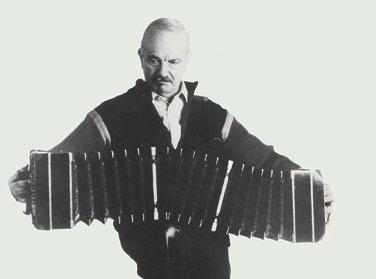






She was a young Iranian woman on vacation — just days before starting college — when she died while being detained by the country’s morality police. Mahsa Amini’s death in September 2022 set off women-led protests across the country and brought international attention to the dangers women face in Iran. Inspired by these events, UC Santa Barbara’s tightknit Iranian community has created a fund for women like Amini to pursue graduate studies at UCSB.
“I grew up in Iran with all the gender apartheid that the Islamic Republic is forcing on women,” says Salva Salmani-Rezaie Ph.D. ’21, who studied material science. “The only way out for women in countries like Iran is through education.” SalmaniRezaie is now a Kavli postdoctoral fellow at Cornell University and will join The Ohio State University’s faculty next fall.
Shortly after Amini’s death was reported, Salmani-Rezaie, Mohamad Nasr-Azadani Ph.D. ’13, and another alumnus (who requested to remain anonymous) came together with retired staff member Venus Nasri to create the Mahsa Amini Graduate Fellowship for Iranian women studying non-STEM fields at UCSB. The group decided to target non-STEM majors because these fields are often inaccessible to Iranian students, particularly women. A GoFundMe page the group set up quickly drew in $13,000.
“You have seen the value of the left brain of Iranian society, which is logic, engineering and science, but not the right brain,” says Nasr-Azadani, who studied mechanical engineering. “The right brain is what you’re hearing now in the news: the passion that women have, the leadership they have taken, the beauty of the innovation they have taken in the demonstration.” NasrAzadani now works in applied research focused on artificial intelligence at Accenture Labs in San Francisco.
With the help of Nasri, the proposal was accepted by UCSB’s Division of Student Affairs, where she worked for many years. Though retired, Nasri volunteers as a lead adviser for graduate students in the Islamic Society of Santa Barbara.
“The Mahsa Amini Fellowship is world-changing in so many ways,” says Interim Graduate Dean Leila Rupp. “It honors not just the death of one woman but the courage of all the Iranian women and others who take to the streets in protest. Here on campus, it honors the Iranian community of faculty, staff and students who, in the face of oppression back home and
anti-Iranian sentiment in the U.S., bravely go about their work and studies. And it recognizes what Iranian graduate students bring to our university community, from the sciences to the humanities and social sciences.”
UC Santa Barbara is believed to be the first university in North America to establish a graduate fellowship in Mahsa Amini’s name.
 BY NORA DRAKE
BY NORA DRAKE
Elaine Skiadas spent the summer before she started college seeing friends, going for runs and cooking. So much cooking. Finishing high school with a diploma and a book deal, she worked diligently to create over 50 new recipes for it. Her inaugural cookbook, “Fantastic Vegan Recipes for the Teen Cook” (Riviera Street Publishing, 2023), was released midway through her first year at UC Santa Barbara.
A communication major, Skiadas has turned her passion for making simple, comforting recipes into an Instagram account with over 50,000 followers (@wandering_chickpea), a website (wanderingchickpea.com) and now her first book.
“At the start of lockdown during the pandemic, I started an Instagram page to document the stuff I was making,” she says. “At first the page was mostly for me. Then I started to get followers and discovered a community of other people who liked the same food I was into.”
Skiadas revels in the creative aspects of managing her account and its accompanying website. “I really fell in love with the creative element of it, like the photography,” she says.
Though not fully vegan herself, Skiadas likes vegan recipes because of her allergies to dairy, eggs and nuts. “I’ve always had an affinity for vegan food because it was often the only food I could eat,” she says. “I guess that’s what started me on this journey.”
Her cookbook focuses on straightforward recipes aimed at teenagers — or really at anybody who’s short on time. “I created recipes that I craved as a teenager,” Skiadas says. “I made an effort to categorize them into weekend versus weekday recipes. Weekend recipes are more like family
meals, or more time-consuming recipes. Weekday recipes are smaller portions and pretty easy to commit to memory.”
One of her go-to recipes: an oatmeal cookie-inspired granola. Living in a dorm room, she’s had to get creative to get her fix. “My mom will actually make it and then mail me batches,” Skiadas says. “My friends refer to it as ‘The Granola.’”
Soon, though, she’ll be whipping up her own granola and developing new recipes for her growing following. “I’m moving into my own place this summer,” she says, “so I’ll have a kitchen again!”
That feeling when you saw your favorite artist at Extravaganza. The time you saw an unknown band in the UCen that went on to superstardom. You can still conjure the images and the melodies like it was just yesterday, and you love to tell that story. Maybe it was Bob Dylan or Sublime. Ben Harper or Diplo. Social Distortion or Fleetwood Mac or Run-D.M.C. Jack Johnson ’97! Who else here remembers Mary’s Danish? Cue the music — and the memories.
The late, inimitable Frank Zappa rocked campus at the height of his “Valley Girl” fame. He’s pictured here in 1982 — and in his trés ’80s ensemble. Are his purple pants pegged? We don’t know, but we hope so. Either way, radical threads, Frank.

Four decades later, guitarist Colin Crawford of the Austin-based indie pop project Dayglow channeled his inner Frank Zappa on stage at Extravaganza in 2022 with a strikingly similar stance and not completely dissimilar color palette. Rock on.

1) What future musical icon and their band played on the lagoon lawn for Extravaganza 1991?
A. Gwen Stefani
B. Morrissey
C. Eddie Vedder
D. Bonnie Raitt
2) How many times did The Grateful Dead play on campus?
A. One
B. None
C. Three
D. Six
3) What year did now famous alum musician Jack Johnson grace the Extravaganza main stage?
A. 1999
B. 2001
C. 2005
D. 2008
4) What 1980s hair band played at the UCSB Events center in 1984?
A. Poison
B. Cinderella
C. Mötley Crüe
D. Whitesnake
5) Where on campus did the Red Hot Chili Peppers play in April 1988?
A. Harder Stadium
B. The Events Center
C. The UCen
D. The lagoon lawn
6) Which modern-day hip-hop superstar has played at Harder Stadium?
A. Drake
B. Kendrick Lamar
C. Chance the Rapper
D. All of the above
Stephanie Malia Hom started teaching at UC Santa Barbara in early 2020 as the first surges of coronavirus infections and deaths prompted lockdowns, mask mandates and physical distancing. Preparing for remote instruction that fall, she wanted to help students struggling with fear and confusion while fitting the coursework in her job description as a newly hired faculty member in the Department of French and Italian.
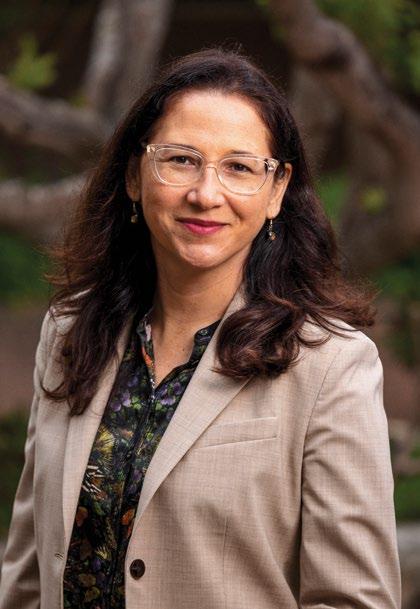
What she came up with was a blend of perspectives from which to view and understand a global health care emergency: a class she named “Biopolitics and Medical Humanities: Italy in the Age of the Coronavirus.”
“I wanted to use Italy as a lens because it had been hit so hard by the pandemic,” Hom says. “I wanted the class to help process what we were all living through and to provide a virtual space where we could come together to counteract the isolation and anxiety caused by months of social distancing and sheltering in place.”
Hom drew from personal experience. Before joining UCSB, she was the executive director at a nonprofit that trained military and VA doctors in integrative treatments, whole-person approaches that combine conventional health care with complementary regimens that might include, for example, acupuncture, nutrition and mental health services. She was also the primary caregiver of a loved one with a terminal disease. Her course description included firsthand reports from friends and contacts in Italy, where she had lived for long stretches.
The class centered on themes of mobility (or a lack thereof), biopolitics (including health care inequalities), immunization and resilience, and Hom brought in guest speakers to discuss health policy, frontline journalism and medical bioethics.
The well-rounded nature of her coursework and its inclusion of often ignored aspects of medicine and wellness aligned with growing connections between conventional health care and humanities-based approaches aimed at improving doctorpatient relationships. “It’s been established empirically,” Hom says. “Trust between doctor and patient is fundamental; the more trust there is, the better the outcomes.”
For the 2022 winter quarter, Hom followed up with “The Art of Translation: Pandemic Writings,” an upper-division course taught entirely in Italian. Drawing again from a range of perspectives, she brought in guest speakers that included Sonia Trufelli, a nurse who led a COVID ward at one of the hardest-hit hospitals in the north of Italy, and Michele Aiello, a filmmaker who documented the pandemic’s impact on that same hospital. This fall, Hom will modify the course to delve more deeply into “the ‘infodemic’ that grew alongside COVID-19,” she says. “The creation and circulation of mis- and disinformation has become increasingly politicized and has grown exponentially in scale and speed. In fact, the case could be made that the infodemic has not only changed but also hardened political lines in the U.S., making it more difficult to discuss critical issues facing our society, such as public health.”
She’ll also keep in mind the importance of treatment alternatives that take in the broader worldview. “As one of our speakers told the class,” she says, “‘Do something for yourself to expand your ability to hold compassion for others and to understand the human condition.’ That’s exactly what we are doing in the humanities.”
OFF THE CLOCK
Grief and joy are inseparable, Kahlil Gibran says in his 1923 classic “The Prophet”: “Together they come, and when one sits alone with you at your board, remember that the other is asleep upon your bed.” For France Winddance Twine, waking up joy after her mother died by suicide required a blowtorch.
In 2008, six years after her mother May died, Twine, a UC Santa Barbara sociology professor, was carrying out ambitious research, including her seminal texts on feminist race theory, a concept she introduced. But she wasn’t dealing with her emotions around May’s death, and in addition to the grief, she was experiencing impostor’s syndrome at work.
“I was on sabbatical in New York when my mother committed suicide,” Twine says, “and I didn’t go to therapy because in my family, you handled things on your own. I came back and I did my work. Years went by in which I was a workaholic. I was overproducing. When I was hired, there were no Black women in the Department of Sociology and only a few Black people in the social sciences. My solution was to work.”
Twine had always been close to her mother, and now she was feeling alone and exhausted. Finally, she was ready to process her mother’s death; she drove up the coast from Santa Barbara to Big Sur’s Esalen Institute, where she planned to participate in a grief retreat.
Once in the group, she saw a familiar face and knew she needed to find another group; at the time, she wasn’t ready to share her grief with people she knew from work. So she asked to be put into the only other retreat taking place: encaustic art.
Dating back to the first century, painting with hot wax, known as encaustic art, was common in ancient Greece and Rome. The oldest surviving encaustic panels are portraits of mummies in Egypt from 100 to 300 A.D.
“I had no idea what I was getting into, but I went into it to process my grief,” she says. Soon, she was making fire and painting with a blowtorch and hot wax. Wielding an open torch, she burned artworks in 12-by-12-inch pieces of furniture-grade birch wood. She was terrified that she’d blow something up.
“I chose to do a triptych and the first piece was of my mother’s spirit before she had us,” she says. “It was all about processing my feelings.” To her shock, the piece was awarded first place at the end-of-retreat exhibition and Twine had renewed her practice of making art — a side of her that she put away when she was in graduate school. Growing up, she made her own clothes and was interested in textile art. She was inspired to take a weaving class by her paternal grandmother, who was Native American. “I had a loom and I used to weave things; I liked the tactile nature of it,” she says. “But at grad school at UC Berkeley, I couldn’t afford it. So, I feel like I gave up weaving for my Ph.D.”
She later attended a workshop in San Francisco and then another the following year. Making art had become a way to get in
touch with her spiritual side. She says it helped her get back in touch with joy, a hope she had regained after reading in “The Prophet” that “the sorrow you experience carves more room for joy.”
This was needed as Twine endured the deaths of three family members in 2020 during the pandemic. Teaching two classes online at the time, she knew she needed to deal with her grief. She had recently received temporary custody of her young nephew Selasi and thought that doing art with him would be a way to connect, and to help shift her mindset. But instead of a blowtorch, which is not baby proof, with Selasi she took up block printing, which can be done with supplies as simple as raw potatoes.
On her own, including through an online class with artists from Chicago, where she is from, Twine began woodblock printing. Her first block print was of a face. “It scared me because it came out so powerful; it was my mother’s face,” she says. “I was frightened by the emotions that came out of my first prints.”
“Art saved me from repeating or recycling those mistakes I made after my mother’s death,” she says. “I don’t think it’s true for all academics, but for me, I was living too much in my head. Art gets me into my heart space, my spiritual place. I’ve connected now with a lot of women and it’s given me something where I don’t evaluate myself — I’m not evaluating myself; I’m doing it for myself.”
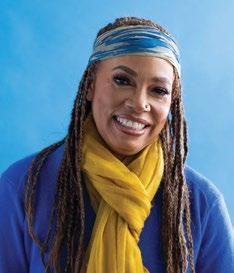
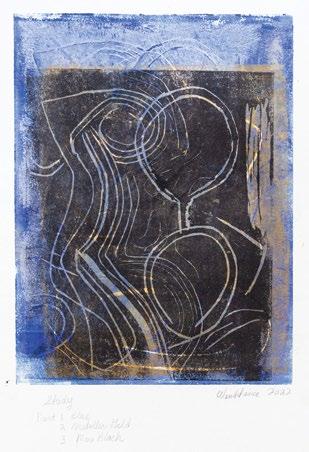


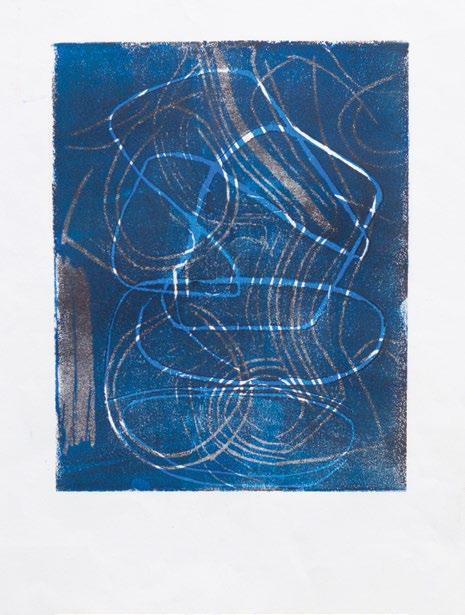
 GAUCHO GIVING
GAUCHO GIVING
Twenty years after her retirement as a school speech pathologist, Joanne Onstine-Dill recounts one case. A toddler had been expelled from preschool; her overwhelmed mother didn’t know how to help. Onstine-Dill diagnosed the girl with autism, and by third grade, she could learn and play with her classmates at school. The diagnosis opened doors for the family. The girl’s mother visited Onstine-Dill every year for advice.
Onstine-Dill received her bachelor’s and master’s degrees in speech and hearing at UC Santa Barbara in the 1970s. Autism was not part of the training then, and Onstine-Dill is proud that UC Santa Barbara is now home to the Koegel Autism Center, a respected center for research, evaluation and support. After 30 years of service to schools, she continues to impact the field through her philanthropic support of the Koegel center.
Led by director Ty Vernon and clinical director Anna Krasno — who both hold doctorates of counseling, clinical and school psychology from UCSB — the Koegel center focuses on developing and implementing strengthbased, motivational support services, interventions and psychological evaluations for individuals with autism and their families.
Over her career as a speech pathologist for Oregon’s Greater Albany Public School District — first on-site and then in an assessment center — OnstineDill participated in many student evaluations. She recalls that clinicians first treated the behavior, not the underlying cause. As the understanding of autism evolved, so did her interest.
“I had to learn this diagnosis the hard way, by connecting with others who knew, interviewing parents and putting information together for that ‘aha’ moment,” says Onstine-Dill. “At assessment dinners, parents would say to me, ‘I’m so relieved that my child has a diagnosis.’”
At UCSB, Onstine-Dill’s philanthropy supports research and clinical training for doctoral students in clinical psychology and special education.
“The Koegel Autism Center is unique in that it is primarily staffed by graduate students who are training to become future leaders in the field of autism research,” says Vernon. “The center relies heavily on the generous

philanthropy of donors like Joanne Onstine-Dill to fund our graduate student researchers in their efforts to develop paradigm-shifting programs and support initiatives for autistic individuals.”
“I am incredibly grateful for the donor support that has allowed me to conduct my dissertation,” says Maria Jimenez Munoz, a doctoral candidate who received her master’s in counseling psychology from UCSB in 2021. “The funds have been able to support the recruitment of over 20 families for a large-scale project aimed at increasing the accessibility of intensive in-home therapy for families across the United States. It is wonderful to see how alumni donations support research endeavors that have a direct clinical impact on participants.”
This ripple effect is what Onstine-Dill hoped for with her support of the Koegel Autism Center.
“When you train one person, they’re going to go out and potentially connect with thousands of lives during their career,” she says.
Election to the nation’s top honorific societies is a prestigious distinction, recognizing a scholar’s pioneering contributions, impact and leadership in their field. It also highlights the depth and breadth of outstanding research and scholarship taking place across campus every day. Halfway into 2023, several more UC Santa Barbara professors have joined these elite memberships:

National Academy of Sciences
Emeritus Michael Crandall, mathematics
National Academy of Engineering
Thuc-Quyen Nguyen, chemistry and biochemistry
Carlos G. Levi, mechanical engineering
National Academy of Education
Dean Jeffrey Milem, Gevirtz Graduate School of Education
National Academy of Inventors
B.S. Manjunath, electrical and computer engineering
Upamanyu Madhow, electrical and computer engineering
American Academy of Arts & Sciences
Emerita Tanya Atwater, Earth science
Leda Cosmides, psychological and brain sciences
Nelson Lichtenstein, history
American Association for the Advancement of Science
Mark Bowick, physics
Richard Mayer, psychological and brain sciences
Chris Palmstrøm, electrical and computer engineering, materials
Julie Simpson, molecular, cellular and developmental biology
Dar Roberts, geography
When Kelly Barsky was growing up, her house was nearly always busy — with a large extended family, relatives were known to abound. Her mom was a banker and her dad was a high school history teacher, coach and athletic director (spoiler alert).
“The importance of education, the toolkit participation in athletics provides and service to the community was inherent,” she says. “ I always wanted to be an educator. I am passionate about working with students and how to best serve and support their development and individual journey. However, being an athletic director was not originally in my trajectory or career plan.”
Yet here she is, UC Santa Barbara’s new athletic director 15 years after first arriving in Santa Barbara — site unseen — for a role as assistant women’s basketball coach. Now the campus’s first female AD, Barsky marks a historic hire for the university and a still toorare statistic in the NCAA. Nationwide, only 14% of NCAA Division I schools have female athletic directors.

“I am honored to step into the Director of Athletics role and to continue serving the Gaucho community, a place that is so special
to me and my family,” Barsky says. “To be named the first female AD makes me proud and incredibly hopeful for continued growth and equity. You can really see the fruits of labor being demonstrated around women’s athletics. For the next generation to see women in this position matters. I’m thankful for those before me that have set the stage for opportunities like this to be possible.”
Already, she has guided the Gauchos to a banner year. Heading into the spring, they were leading the race for The Big West’s Commissioner Cup, awarded annually to one institution for achieving the highest degree of athletic success, as studentathletes, teams and UC Santa Barbara Athletics overall have contributed to an impressive (and growing) list of achievements for 2022-2023.
And Barsky’s impact goes beyond Santa Barbara to the national stage, where she serves on the NCAA Division I Council, representing The Big West, and on the NCAA Women’s Basketball Oversight Committee.
From elementary school teacher to collegiate women’s basketball coach to academic affairs, then back to athletics,
where a big piece of her heart had always been, she was a standout high school and collegiate basketball player herself in New Hampshire. Winning and records are great outcomes, Barsky says, but what truly fuels her is the journey — her own, and those of the student-athletes and community she works with every day.
“The learning and experience gained from the student athlete journey is everyday,” says Barsky. “It’s being intentional, working hard, making good decisions, doing the right thing, showing up for your teammates, preparing yourself to be the best you can be and going after the things that are important to you. It’s also about the connection and bond with your team and community, and the shared experiences you will hold onto, which include both successes and struggles that occur along the way.”
“We are all connected; we are Gauchos. It is a great privilege to serve and support student athletes, our campus and community.”
Men’s basketball and men’s tennis were The Big West Champions.
Men’s soccer, women’s volleyball, men’s cross country, women’s basketball and men’s swimming were The Big West and MPSF Runner-Ups with highlycompetitive spring sports still in season.
Five student-athletes earned All-America honors, with the potential for more in the coming weeks.
95 student-athletes received ScholarAthlete recognition through the winter seasons; all programs earned a team GPA above a 3.0.
UC Santa Barbara Athletics set a Give Day fundraising record, leading all university departments with $561,269 dollars raised through 653 donations.
 PHOTOS: JEFF LIANG
PHOTOS: JEFF LIANG
Sameer Pandya is the author of the novel “Members Only” (2020) and the story collection “The Blind Writer” (2015). He is an associate professor of Asian American studies.

Though I read and write for a living, I find myself suffering from a problem many of us have: waning attention. There was a time I could read a short novel in a sitting, a longer one over several sittings. But now, other things draw my attention: my teenage boys, that new “Serial” podcast, the new season of “Succession,” a family group chat I have to respond to immediately. And yet, reading — and reading novels in particular — is what has always sustained me and will continue to do so, even when the novel form sometimes feels like oldschool Kodak film in the age of iPhones. Lately, I have found myself returning to books that I have loved. At the same time, I am also finding books published more recently, which feel like works I will return to in the future. Here are five to recommend:
Next year will be the 100th anniversary of the publication of a novel that once used to frustrate me because of Forster’s depiction of the Indian doctor Aziz. And yet, rereading it recently, I was struck by Forster’s command of the novelistic craft — creating tension through a tight plot, deeply realized, complex characters and swift movement between points of view. And at the center of it all, his point from a century ago still feels relevant now: our inability to communicate across difference.
One of my favorite novels of the past decade, this one by Nunez is funny and incisive and uses a very fine, sharp knife to carve up the idea of the great American male novelist. And there is a huge Great Dane at the center of the novel.
One of the best graphic novelists working today, Tomine in the title story of this collection — on family and grief and connection — packs a punch through simple drawings and some of the best uses of blank space on the page.
I am always nervous about entering my biography reading phase, but French’s biography of the Nobel Prize-winning novelist is a master class in how to write the life of a complicated, difficult man who produced a shelf full of remarkable works of fiction and nonfiction.
In light of his recent attack, I have been thinking about Rushdie and his remarkable novel that takes on 20th-century Indian history, identity and lineage, the idea of truth, and on and on. I recently retaught the book after many years and reading it with a new generation of students opened up lively conversations about freedom, the dangers of nationalism and the importance of multiple voices for a thriving democracy.
250,000+ Total number of alumni
150,000+ Alumni living in California
18,000+ Alumni living in Santa Barbara County
55,000+ Alumni from Generation X
15,000+ Biological sciences grads
300,000+ Total degrees conferred
 WRITTEN BY Sonia Fernandez '03 & Shelly Leachman
Perko
WRITTEN BY Sonia Fernandez '03 & Shelly Leachman
Perko
Harnessing their curiosity and ingenuity, researchers in disciplines from biology and chemistry to engineering, psychology, and the humanities, are bending their efforts toward improving outcomes for doctors and making life better for patients. They’re pioneering new diagnostic approaches and tests, innovating new therapies for diseases and chronic conditions, and advancing our understanding of life’s most confounding medical challenges. They’re leveraging their technical and technological prowess, sharing their scientific expertise and, importantly, passing their knowledge on to the next generation of researchers. Here we highlight six scientists — a modest sampling from the ever-growing number of passionate medical changemakers across campus — who are making inroads on conditions that affect millions of people around the world.

Small but mighty macrophages, part of the innate immune system, are big eaters. These white blood cells surround and kill microorganisms and remove dead cells in a process called phagocytosis. When they detect a threat, macrophages can also spark action in other immune cells. What if they could be programmed to identify and eat cancer? That’s what Meghan Morrissey and her lab are working toward, aiming to advance immunotherapy for cancerous tumors. Employing a strategy analogous to one that proved revolutionary for T cells — and was FDA approved as a therapy — Morrissey’s team hopes to train macrophages to eat cancer by swapping one part of a cellular protein with antibody fragments that recognize cancer cells. The approach could one day provide an alternative to T cell therapies, which comprise the majority of currently available immunotherapies.
“It’s a terrible disease. Everybody knows someone who is affected by cancer. I cannot overstate that as a motivation. And every cancer is unique — each comes from a different set of mutations — so the scope of the problem is big and complex. But out of this incredible mess of millions of people being affected by slightly different cancers, we have to find some sort of overarching organization, things that are common enough for different people that we can actually target them. It’s a bit of a limitless problem that we’ve made huge progress on in the last decade, but still aren’t close to solving.”
— Meghan MorrisseyToday’s immunotherapies are successful in about 25% of patients. A macrophage-based alternative for the 75% not responding to those therapies could potentially boost survival rates for patients with tumor cancers. Importantly, it could prove to be a more targeted and less toxic therapy for all cancer patients.



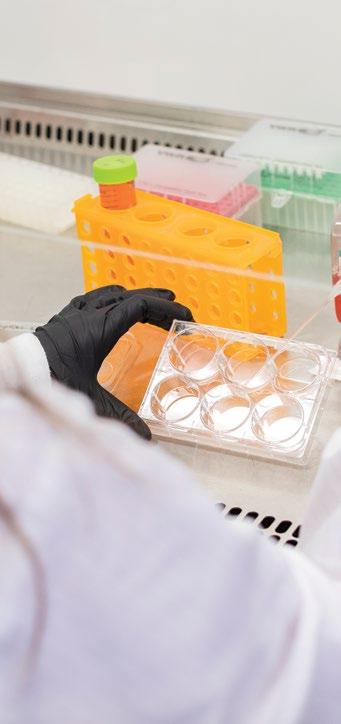

From remote, rural Colombia to the sunny shores of Santa Barbara, physicianscientist Kenneth S. Kosik delves into the genetic origins of Alzheimer’s disease. His goals: to trace the movement of the disease through the centuries and around the globe, and to find ways to disrupt the formation of the pathological protein tangles and sticky plaques that are the hallmark of the as yet incurable form of dementia that affects millions of people worldwide. His longtime collaboration with renowned Colombian neurologist Francisco Lopera and their fieldwork in Antioquia, Medellín, with the world’s largest genetic cohort of early-onset Alzheimer’s patients, have yielded clinical trials and precious clues in the effort to stop the disease. One promising avenue: A woman in a rural family of thousands predisposed to Alzheimer’s by their 40s, due to a rare genetic mutation, has managed to escape her family’s fate, thanks to a second rare mutation that seems to confer some protection.

In the uphill battle that is the search for an Alzheimer’s cure, every finding is an important step toward the day when an Alzheimer’s diagnosis does not automatically consign the patient to a terrible fate.





“While bench and bedside often seem separated by a wide chasm, the physician-scientist in bridging this divide can discern which of the numerous basic laboratory insights can serve as steps toward treatments for incurable conditions such as Alzheimer’s disease. In so doing, it is an extraordinary privilege to conduct research with the direct participation of those affected, their families, their communities, and with a team of exceptionally talented graduate students and post-doctoral fellows.”
— Kenneth Kosik
Few things are as devastating as a diagnosis of age-related macular degeneration, a condition in which retinal cells at the back of the eye break down, causing the loss of the central field of vision. AMD affects more than 200 million people worldwide. But biologist Dennis O. Clegg and collaborators have developed a therapy that has been shown to stop the progress of the disease and even restore some vision in some patients: a “patch” of stem cell-derived retinal pigment epithelium — a layer of darkly colored cells that, when implanted beneath the degrading visual cells, nourishes them and enables their continued function. Early results were promising, with patients with severe AMD experiencing initial improvements and no deleterious effects a year later. As the patch moves toward FDA approval, the team continues to fine-tune it to make it more robust, with the goal of creating an “off-the-shelf” therapy that is easily available to patients everywhere.
“Vision is a precious resource. I am inspired by patients who face the prospect of blindness with no effective treatment available. We have assembled a talented, interdisciplinary team to translate basic research findings to clinical trials with the hope of treating unmet medical needs in eye disease.”

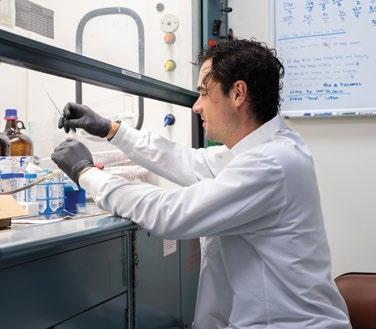


 — Dennis Clegg
— Dennis Clegg
A treatment for one of the world’s leading causes of blindness and the preservation and restoration of sight means the improvement and longevity of the independence and the quality of life for the world’s elder population.
During her previous training as a clinical psychologist, Regina Lapate saw young patients, children and adolescents, with depression and anxiety — yet little about their environment, social structures or prior experiences seemed to explain why they were suffering at an early age. While treating these patients, she became bothered by the lack of a holistic understanding of these disorders that incorporated biology.
Today, Lapate and her lab are working toward exactly that aim. Focusing on the intersection of emotion and cognition, they use electroencephalography, peripheral physiology and functional neuroimaging — often combined with behavioral assays — to examine individual differences in emotion regulation, a critical underlying source of difficulties that can lead to, or be exacerbated by, mental health issues.
Their current research includes studies detailing prefrontal control of emotion and how emotion modulates motor function, as well as temporal coding and the possibility that those with more distorted temporal memory of affective experiences could be more likely to develop symptoms of anxiety and depression. An upcoming project will use neuroimaging and non-invasive brain stimulation targeting the hippocampal region in an effort to enhance temporal coding and see if it can be manipulated for the better — an advancement that could inform future treatments.
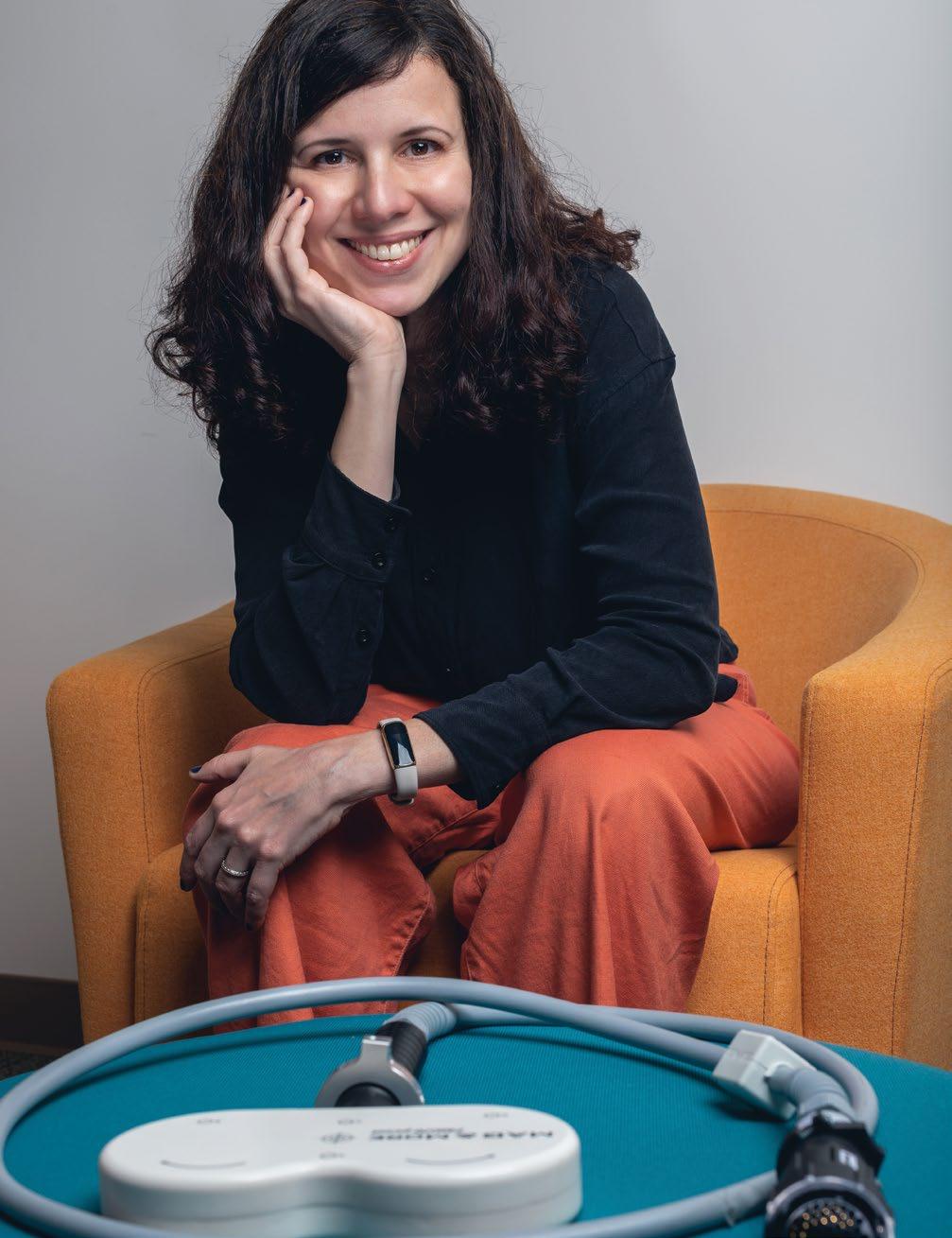
“How does an affective event, including emotional trauma, alter the encoding of memories? Are some individuals predisposed to encode the temporal aspects of negative events differently, causing emotional responses to persist and adversely impact wellbeing? With our temporal memory work, we are investigating those questions to answer a bigger one: what are the neural bases of emotional resilience? We need to understand the processes at work in multiplexed disorders such as anxiety, depression and PTSD. There are social factors that go into these, but they also have a neurobiological basis that increases risk and vulnerability to them. Given their prevalence, and the current state of available treatment, we need people in all corners thinking creatively about precisely how our brains are organizing our emotional experiences over time to guide our current and future behavior, and promote our wellbeing.”

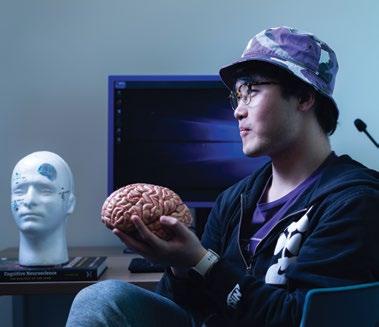 — Regina Lapate
— Regina Lapate
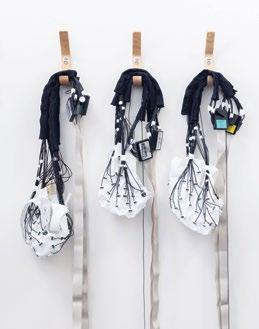
More than 20% of the adult U.S. population has experienced mood and anxiety disorders; more than 30% of youths aged 12 to 17 have experienced anxiety disorders; and 17% have suffered major depressive episodes. And these rates have been on the rise. Illuminating the biological mechanisms at work is critical to our understanding of how to better promote adaptive functioning and reduce vulnerability to psychopathology.


Rarely does basic research so directly lead to a clinical impact for people with a progressive, genetic condition as in the case of cell biologist Thomas Weimbs’ work which targets polycystic kidney disease. PKD affects roughly 12 million people worldwide with painful, fluid-filled cysts and inflamed, deteriorating kidneys. While studying animal models with PKD, Weimbs and fellow researcher Jacob Torres were startled to find that in animals that had been fed beta-hydroxybutyrate, a ketone that our bodies make naturally during fasting, the cysts stopped growing and had even shrunk. This led to their realization that PKD can be controlled and even reversed with nutritional interventions, including the popular intermittent fasting and ketogenic diets. Weimbs is currently focusing on clinical trials to determine the long-term efficacy and feasibility of these diets to treat PKD, and, in collaboration with dietitians, he has developed a diet education program and a medical food to help patients control their condition.
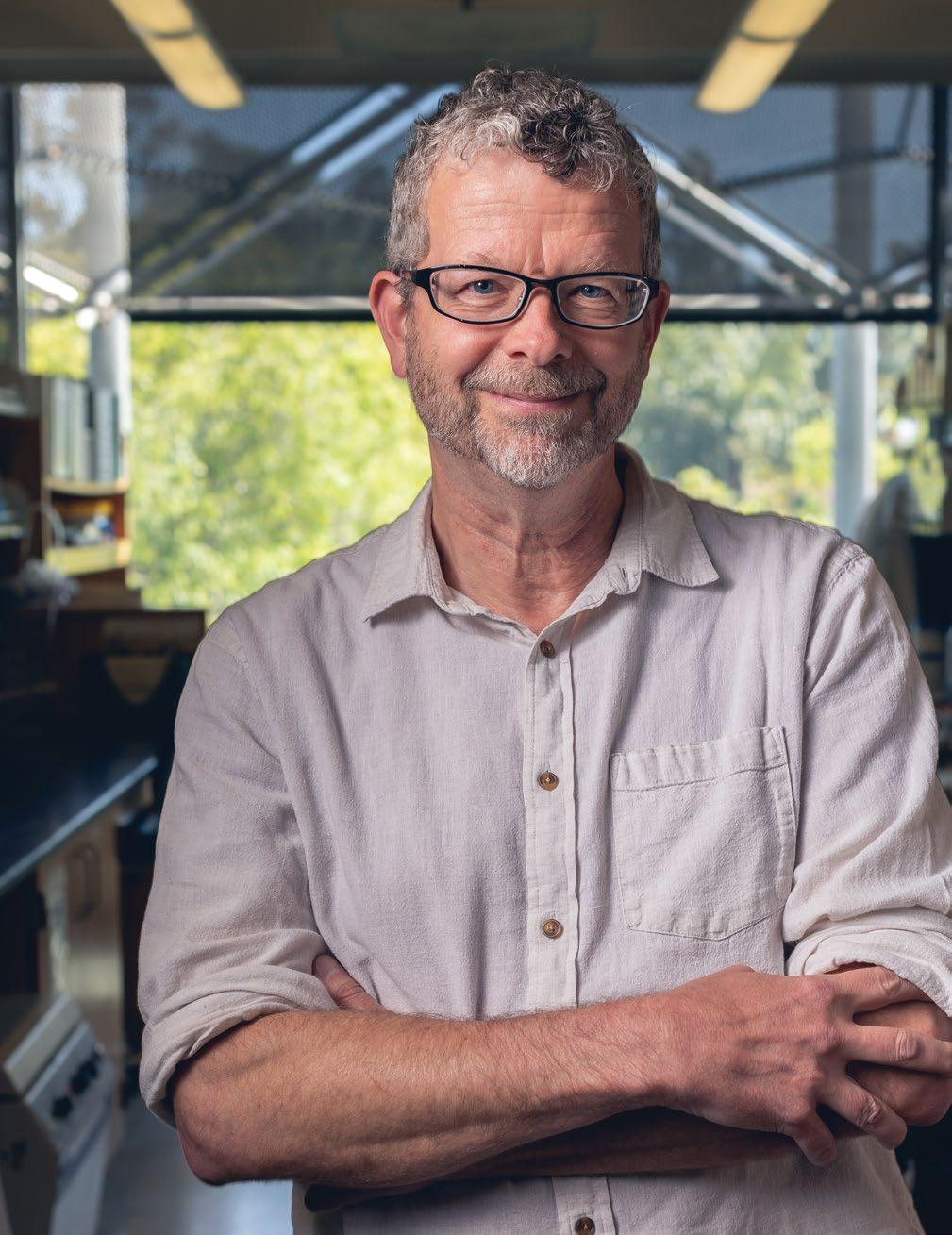
“As academic, basic researchers, we are used to publishing our findings and moving on to the next thing. It has been an unexpected and amazing journey to be able to team up with wonderful clinicians and patients with kidney disease, take discoveries straight from the lab and translate them into practice. I would never have thought that our research would lead to the launch of a startup company and the creation of a product that benefits patients. All this happened in record time and my head is still spinning.” — Thomas Weimbs


Nutritional interventions empower PKD patients with the ability to do something themselves to control an otherwise relentlessly progressive disease, and to preserve their quality of life, rather than waiting for their kidneys to fail.



Driven by her daughter’s Type 1 diabetes diagnosis, Sumita Pennathur is steadfastly focused on developing solutions to help diabetes patients better manage their condition. Among them: a disposable patch for insulin delivery and a cannula that can remove preservatives known to be toxic from insulin before it enters the body. With a major grant — the Visionary Award — from the American Diabetes Association, she and her team have been successful on both fronts. Using the science of nonlinear electrokinetic flow, the Pennathur Lab was able to innovate a novel mechanism to pump insulin at very precise volumes and flow rates at a very small scale. Based on their results, in May 2023 they were awarded a grant from the Juvenile Diabetes Research Foundation to help move their proofof-concept device into the prototype phase. By mimicking chemistries used in nature to arrest passivation, the group also innovated a method to remove phenol and metacresol within the cannula itself – as those excipients are important for stabilizing insulin in the reservoir, but can be toxic to the patient.

“I was born into an immigrant family where my parents had an unbelievable work ethic, one I very much respected. In response, I have always worked incredibly hard to achieve. After becoming a professor and having kids, I shifted my efforts into trying to help the quality of life of people. Specifically, when my third child died in the hospital at 28 weeks, I really felt the pain of losing a life, and started focusing on tangible and translational med tech. A year later when my second child was diagnosed with diabetes, I knew I had to put 1,000% effort into making sure she stays alive and well. It gives me amazing motivation every day.” —
Sumita PennathurMore than 37 million Americans — about one in 10 — have diabetes, according to the Centers for Disease Control and Prevention. Worldwide that figure has surged to nearly half a billion. For Type 1 diabetics whose bodies don’t make insulin, or for Type 2 patients whose bodies don’t use insulin well, significant advancements in insulin delivery are crucial to quality of life.





The scientists in this print package are emblematic of the many dozens of researchers on our campus devoted to advancing medicine. Visit

Two diverse people with connected stories come together for a greater good
 Written by Keith Hamm ’94
Sarah Eisner and Randy Quarterman in Port Wentworth, Georgia.
PHOTO: KELLY J. PARSONS
Written by Keith Hamm ’94
Sarah Eisner and Randy Quarterman in Port Wentworth, Georgia.
PHOTO: KELLY J. PARSONS
Intrigued, Randy opened the email. Sarah introduced herself as a descendant of George Keller and said she was hoping to connect with the Quarterman family. She asked Randy if he would be willing to speak with her. Curious, he replied.
What happened next was the beginning of Sarah and Randy’s exploration of family histories intertwined by slavery, deep in the American South. Where it would lead, neither one could have imagined.
From Sarah, Randy learned that his great-great-greatgrandparents, Grace and Zeike Quarterman, were enslaved workers on Keller’s plantation in Meinhardt, Georgia. From Randy, Sarah learned that Grace and Zeike’s heirs were embroiled in a drawn-out dispute with the state of Georgia regarding ownership of coastal farmland that Keller had gifted them in 1890.
Sarah offered to help, and Randy accepted. Sarah traveled to Georgia to meet his extended family, to talk about their shared past and how together they would move forward to secure the property that Keller — her great-great-great-grandfather — had given to Grace and Zeike. They soon recognized in the momentum of their new friendship an opportunity to share their healing experiences and to help others.
In 2021, Sarah (Liniger ’93) and Randy established the Quarterman & Keller Foundation and its first initiative, The Reparations Project, a nonprofit centered on repairing generational harm and supporting descendant Black families through education, land preservation and amplifying the work of artists.
They are among a growing number of Black and white families exploring their family histories and opportunities for reparations via social media groups, ancestry sites and genetics testing. It’s a movement that extends well beyond the U.S.
“We are currently witnessing increased interest in reparations in part because of internal political pressure and external examples in other nations,” says Daina Ramey Berry, UC Santa Barbara’s Michael Douglas Dean of Humanities and Fine Arts and a leading expert on slavery. “The idea of redress for human rights atrocities has been a part of world history for a long time. The U.S. provided reparations for some historical injustices, but not for slavery.
“There is also an element of personal connection to the topic,” Berry adds. “As people learn more about their heritage through widely available DNA testing and genealogy, they are often forced to confront truths about the unjust institutions their own relatives participated in. They might ask themselves, ‘What has been done, what can be done, and what should be done?’ It’s a conversation happening all over the world.”
For Sarah, the first step was to send that email. “I was looking to make an apology or reparation with descendants of those
my ancestors had enslaved,” she says. “I had no idea what that would look like. I was lucky when I found Randy, and I was lucky that he was receptive.”
For Randy, it was an opportunity to have difficult conversations, and he was open to the healing that it might allow.
“I would challenge any white person who knows their history to share it like Sarah has done,” he says. “And I challenge my own community to hold back their rage and just listen to the individuals acknowledging the past so that we can all move forward.”
The Reparations Project rolled out its first educational initiative in 2021 with social justice scholarships for 10 students at Spelman College, Morehouse College and Clark Atlanta University, all of which are located in Georgia and designated as historically Black colleges and universities. In addition, this spring, Sarah and Randy launched the Quarterman & Keller Racial Justice Scholarship at UCSB, Sarah’s alma mater, to support Black studies curricula focused on societal change. Its debut cohort of 14 scholars began during the 2022–23 academic year.
To tackle the challenges faced by Black families to retain and acquire land, the nonprofit also offers grants to help pay property taxes for people of the Gullah Geechee culture that has existed for 400 years along dozens of sea islands and inland waterways from North Carolina to Florida. In partnership with the nonprofit Lowcountry Gullah Foundation, grants are in place to help fend off land loss on Hilton Head Island, South Carolina, and in Chatham County, Georgia. Other related funding has included support for the Gullah Museum of Hilton Head Island and the Black-owned Promised Land Farm.
Their charitable work also aims to amplify Black voices. In 2022, for example, the project purchased bulk orders of “REPARATIONS NOW!,” a collection of poems by the poet laureate of Alabama, Ashley M. Jones. They distributed them to high school students in Silicon Valley, California’s predominantly white hub of big tech, and in the East Bay, where Sarah is from.
At the same time, Sarah and Randy continue to fight for clear ownership of the land George Keller gave to Grace and Zeike Quarterman more than 130 years ago; its title remains clouded because Zeike did not leave a will.
Once that’s sorted out, Randy says, the goal is to build a public educational space, such as a center for financial literacy and a learning hub for parolees transitioning back to everyday society. “This land is what brought Sarah and me together,” Randy says, “and we want to build something to benefit my Black community.”
Out of the blue one day in the summer of 2019, an email from somebody named Sarah Eisner arrived in Randy Quarterman’s inbox. The subject line read, ‘Descendant of Zeike Quarterman.’
Randy lived a life that had uniquely prepared him for his work with The Reparations Project. The son of an American GI and a Japanese woman, he was born on an Air Force base in Okinawa. Japanese was his first language. The Asian culture of his upbringing, he says, taught respect, honor and hard work.
Randy’s father had grown up in the Deep South enduring a life scarred by violence, poverty and fear of the entrenched systems of American society that had betrayed Black people for generations. He had enlisted in part to start a better life, and when Randy was born, he wanted to protect his son from the traumas back home.
“What my dad really wanted me to be was a Japanese citizen so that I would not experience what it was like growing up as a Black person in America,” Randy remembers.
But after his parents separated, Randy and his father moved to Georgia. At 12 years old, he was a multiracial foreigner in a new home and culture strikingly different from those of his upbringing 12,000 miles away.

“I knew I was different,” he remembers, “and I was not wholly connected to either side of the family.”
Randy left high school before finishing, got his GED and worked at a sugar refinery before enlisting in the Army. After four tours to Iraq, in combat logistics, he was stationed in Korea, where he got glares from Koreans in his workplace when
they overheard him speaking Japanese during phone calls to his mother in Okinawa. He soon learned about Japan’s enslavement of Koreans during the first half of the 20th century and the impacts of racism between the two countries.
Thinking back, he understands that many of his most profound life experiences contributed to how he responded to Sarah when she first reached out. “I knew where her emotions were coming from,” he says.
Prior to looking into the family history that led to her greatgreat-great-grandfather’s plantation, Sarah graduated from UCSB with a bachelor’s degree in political science, and from Stanford University with a master’s in engineering. She worked for a decade in the Bay Area tech industry before leaving to earn a creative writing Master of Fine Arts degree.
What started as research on a novel about her ancestors and the Black people they had enslaved evolved into something bigger when she met Randy.
“There are interpersonal reparations between us,” Sarah says, “but together we focus outwardly, moving forward to help one family at a time.”
Randy and Sarah share a moment in the Mosher Alumni House.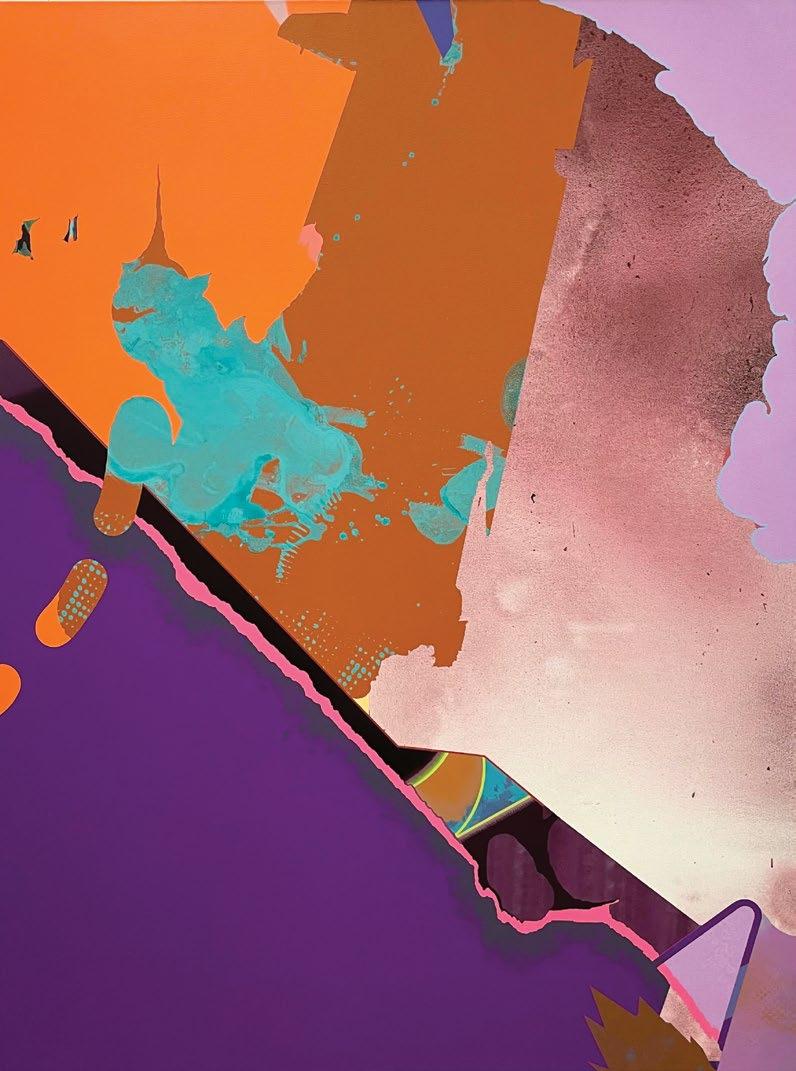 Philip Argent, Untitled (Future Smoke), 2023, Acrylic on canvas, 48 x 36 inches
Philip Argent, Untitled (Future Smoke), 2023, Acrylic on canvas, 48 x 36 inches
Among the many sizzling headlines recently, you might have missed some rather sensational mathematical news. The New York Times reported that “a self-described shape hobbyist” had finally solved an open problem in the mathematics of tiling. The hobbyist had discovered a long-sought-after shape to make infinite and nonrepeating patterns on a two-dimensional plane.
But why did the solution — which was first summoned by mathematicians in 1961 — take so long to surface? And why did it only first occur to a retired printing technician in a small East Yorkshire seaport village?
It turns out, how we come to have great insight is a question of its own.
Since the beginning of his career as a cognitive psychologist in the 1990s, Jonathan Schooler, acting director at UC Santa Barbara’s SAGE Center for the Study of the Mind, has been outputting data sets for some of the brain’s most ineffable qualities: creativity and curiosity, mindwandering and mindfulness, meta awareness and consciousness. If what Nietzsche says is true, “If you gaze long into an abyss, the abyss also gazes into you,” Schooler is getting the stink eye.
At his META Lab in UCSB’s Department of Psychological & Brain Sciences, Schooler is leading researchers in looking at the interior life of the mind. Among the lab’s focuses, it has examined a kind of daydreaming known as mindwandering, engaging in a purposeful activity while thinking about something unrelated. In one of Schooler’s studies, participants read four chapters of Tolstoy’s “War and Peace,” reporting they mindwandered about 15% of the time — but it wasn’t just happening because Tolstoy is tough.
In a study using third-grade literature, adult participants reported similarly high incidents of mindwandering. Even in a study in which the story turns to gibberish as you scroll, Schooler says, “participants continue to advance the text for quite a while before they notice that what they’re reading makes
absolutely no sense whatsoever; and if we probe them while they’re doing it, they say, ‘Yeah, I was mindwandering.’”
Indeed, mindwandering can lead to a slew of self-defeating outcomes, such as not really reading what you’re reading; and yet, in a paper co-authored with Shelly Gable and Elizabeth Hopper, also at UC Santa Barbara, Schooler was able to give traction to an important positive outcome: the occasional visit from the muses.
For a study looking at the experience of sudden insight, nearly 200 professional writers and physicists recorded their most creative ideas each day, as well as what they were doing and thinking at the time. The results showed that they had some of their best ideas when they weren’t on task. Some 20% of the time, they were doing other stuff, like soaping up in the shower or walking the dog. To a surprising degree, the ideas found while mindwandering were also more likely to be associated with overcoming an impasse on a problem and to be experienced as “aha” moments.
“Mindwandering is a source of distraction but it’s also a source of great creative leaps of imagination,” Schooler says. “I think that in many cases, ‘aha’ experiences involve the emergence of processes that have been going on at the unconscious level. It speaks to a notion of transliminality, unconscious ideas percolating up into consciousness as insight.”
Madeleine Gross, who joined the META Lab as a graduate student before continuing on as a postdoctoral researcher, has been looking at experiences with art as a way to cultivate creative thinking.
Gross started out studying how the brain assigns importance to things. “One sees the world as laden with meaning and begins to make sense of it,” she says. “It can give rise to a kind of magical thinking in which connections are made between loosely associated concepts.” There is evidence that, after exposure to art, people are loosening categorical boundaries and experiencing “category-overinclusive thinking” or “conceptual expansion,” as Schooler calls it.
To test this, study participants are asked to rank belongingness to different categories. For example, they might ask, “How much does a car belong to the category of ‘vehicle?’” Ten out of 10. But what about an atypical form of transportation, like a camel? Generally, people rate the camel a 3. To get the camel’s number up requires more conceptual expansiveness, and for some people, engaging with art can trigger it.
The art doesn’t have to be abstract either. For many, it’s representational art that leads to evidence of heightened creativity. “It’s not one size fits all,” Gross says. “The aesthetic process is the struggle to make sense of art, stretching the mind and wrestling with ideas.”
Since people have different tolerance levels for magical thinking, making sense of abstract art also means some people are more open to its ambiguities than others. Likewise, once the meaning-making system is activated, it can be cast in different directions and produce new products.
For millennia, humans have longed to understand their place in the natural and spiritual universe. One of humanity’s oldest questions is one of science’s hardest: how to explain the relationship of matter and mind.
Objective science, Schooler notes, provides no way of conceptualizing the three things we can be most certain of from our own first-person perspective: experience, the flow of time and the uniqueness of now. With Tam Hunt at META Lab and Justin Riddle at the University of North Carolina, Chapel Hill, Schooler has begun to develop a general resonance theory to conceptualize how the mechanics of the physical world allow for consciousness.
By applying observations from neuroscience about resonance, or shared vibrations, Schooler proposes a hierarchical system in which streams of consciousness may be organized like a picture made up of smaller pictures, or like nested observer windows — with each window endowed with its own conscious experience — connected through resonance.
“Within our bodies, neurons may have their own conscious experience, but we identify with and perceive only the highest level of consciousness that exists on the human scale,” Schooler says. “Likewise, consciousness may trickle down and exist at all levels, even down to subatomic particles like photons.
“We do not understand consciousness or how a three-pound meatloaf of a brain produces it. Until we do, we need to be open to the idea that it relies on aspects of reality that entail more than the brain.”
Philip Argent is a continuing lecturer in painting in the art department. His work has been exhibited in group exhibitions from the Museum of Contemporary Art in Cleveland to the Young Eun Museum of Contemporary Art in Kwangju, Korea. He also has had solo shows in Los Angeles, New York and Berlin; and two of his recent collage works on paper are in the permanent collection of the Museum of Modern Art in New York. See more of his mindbending abstract paintings — and let us know how you feel afterward.
Philip Argent, Untitled (Partial Premonition), 2017, Acrylic on canvas, 44 x 33 inches
“ The aesthetic process is the struggle to make sense of art, stretching the mind and wrestling with ideas.”
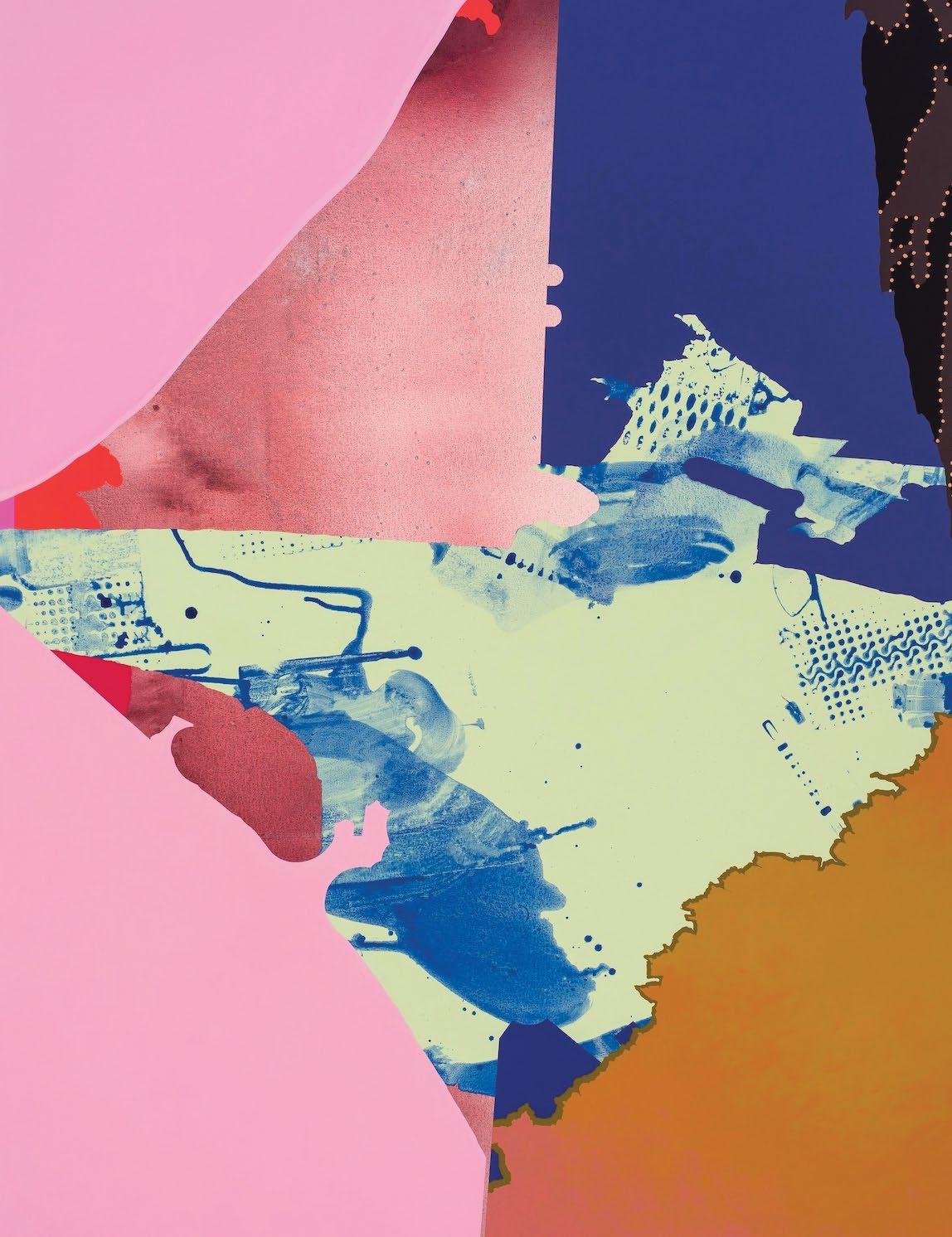 Written by Harrison Tasoff | Photos by Matt Perko
Written by Harrison Tasoff | Photos by Matt Perko

Controlled burns can be a boon to our landscape
Flames torched the hillside, igniting the dry chaparral at Sedgwick Reserve in California’s Santa Ynez Valley. Sagebrush and yucca caught fire like tinder as the flame front advanced, leaving charred snags and smoldering yucca stumps in its wake.

Dozens of professionals hurried about, clad in Nomex gear with hoses and water trucks at the ready. Instead of nozzles, though, their gloves gripped drip torches with flames flickering at the ends of the spouts. They had lit the fire that now consumed the hillside, and they labored on to ensure it would spread.
Resource managers are increasingly turning toward prescribed burns as a tool to maintain and restore landscapes and reduce the risk of wildfires. The technique stretches back thousands of years to the native peoples of North America. European Americans began to suppress the practice and, for more than a century, every spark and ember was aggressively extinguished. But now scientists and land stewards are beginning to understand the nuances of fire in the American West, and how we can put it to good use.
When employed carefully, fire can be an incredibly versatile tool. The native tribes of California have used fire for millennia to promote a patchwork of ecosystems that’s supported a diversity of useful plants and animals. Today’s experts are rediscovering prescribed fire as a way to both encourage native growth and manage fuel loads, preventing firestorms from exploding beyond control.
Prescribed burns also provide a unique opportunity for scientists to study the dynamics of fire and its effect on ecosystems. The resulting insights can guide land management, especially as climate change pushes the western U.S. toward drier, hotter conditions.
At Sedgwick, a caravan of workers set off toward the western edge of the reserve, trudging up the dusty trail to the property’s edge. A line of fire hoses, laid out the day before, guided everyone to their places. Almost as soon as the crew began to drip liquid flames onto yucca and sage branches just below the ridgeline, the dry wood immediately ignited. Fire was on the landscape and smoke began billowing into the air.
It was a bizarre sight for the uninitiated, to see unfettered flames dancing across the hillside, leaping from shrub to shrub. But this was no wildfire. It was a tame fire, harnessed like a beast of burden to do our bidding.
“We’re ultimately in control,” says Santa Barbara County firefighter Eddie Luparello, as he surveyed the flames from the ridge crest. “For instance, starting the burn from the ridge forced our fire to travel downhill, against its natural inclinations.”
Standing beside Luparello, UC Santa Barbara doctoral student Kaili Brande watched flames pass over instruments she had placed before the burn. Brande investigates how a landscape’s fuel structure, composition and biodiversity lead to different fire behaviors, and how those behaviors affect the severity of a burn.
“Prescribed burns offer the rare opportunity to collect pre-fire data in addition to the post-fire data that’s normally available with wildfires,” Brande says.
Luparello welcomed Brande’s efforts. “The beauty of doing this in conjunction with UCSB,” he says, “is that now we’re putting hard data into what was just a skill passed from one firefighter to another.”
Hannah Etchells, an ecologist visiting from The University of New South Wales in Sydney, Australia, also was at Sedgwick to observe the prescribed burn. She concurred: “This is as close as you can get to a controlled experiment in fire ecology.”
The wildland of California is a realm of fire. It’s a rare Mediterranean climate region, with cool, wet winters and warm, dry summers. In a climate like this, fire exerts a strong environmental influence. “Adapting to fires becomes a way of succeeding,” says UCSB Distinguished Professor Frank Davis, a landscape ecologist who studies fire at Sedgwick — part of the UC Natural Reserve System — and directs its La Kretz Center for Research.
California’s native Indians were intimately familiar with the effect fire had on the landscape and many used it for thousands of years to manage the land. They promoted ecosystems that favored useful plants, improved hunting and ease of travel, curtailed wildfire risks and reduced pests like ticks.
“When we’re using fire on the landscape, you could really think about it more as a form of agriculture,” says Diego Cordero, the lead environmental technician for the Santa Ynez Band of Chumash Indians. “After these big fires here in the hills, you see flowers you probably hadn’t seen in decades popping up everywhere. A lot of those plants are actually our (Chumash) crops.”
The lingering legacy of Indigenous management is a major reason we could successfully fight fires in the 19th and 20th centuries; European Americans and other settlers took control of a landscape that was well tended. But they imposed fire suppression and neglect, experts say, and the consequences have caught up with us.
“You can’t fight these firestorms anymore,” says Jared Childress, program manager for the Central Coast Prescribed Burn Association, a project funded by Cal Fire and the UC Cooperative Extension. “All you can do is get out of the way.”
Scientists still have a lot to learn about controlled burns. For instance, some burns may favor native plants while others could provide a foothold for introduced species. “Those are the kinds of things we need to learn about,” Davis says, “and research at Sedgwick Reserve is looking at effects on plants and animals while meeting other objectives such as reducing wildfire risk.”

These insights will be crucial as climate change extends the wildfire season. The hot, dry, windy conditions that favor fire will become more common, increasing the frequency of wildfires.
Acknowledging that burning any vegetation releases toxic carbon dioxide, Davis says, “The question is, ‘How would you like vegetation to burn?’ Burning is an inevitable feature of these landscapes. But with prescribed fires, you’re burning under more moderate, controlled conditions.”
Wildfires are more destructive and mobilize more carbon than prescribed burns, and the vast majority of burning in California is still due to wildfire. “We burn tens of thousands of acres in prescribed fires,” Davis says. “Millions of acres burn each year in wildfires.”
By early afternoon, a full 20 acres had burned in this round of prescribed fires. A few personnel continued patrolling the area after the flames had died down, stomping out embers and shoveling up smoldering snags. “Working on these prescribed burns speaks to a deep, ingrained part of our brain,” Childress says: “the part of our brain that stares at campfires for hours and never gets sick of it.”
Now we’re harnessing our fascination with fire for the good of the landscape. Spreading knowledge and awareness among the public will be just as important as spreading fire on the ground. “It’s hard to change generations of culture and belief,” says Phil Dye, a retired fire captain now working as a prescribed fire specialist and ‘burn boss.’ “I mean, we all grew up with Smokey the bear. And Smokey says all fire is bad, and all fire must be suppressed.”
Smokey still serves as the avatar of wildfire prevention, but the message he embodies is maturing. In 2001, Smokey’s tagline changed from, “Only you can prevent forest fires” to, “Only you can prevent wildfires.” The subtle difference reflects the nuances in our growing understanding of fire.
This is as close as you can get to a controlled experiment in fire ecology.
Hannah Etchells, University of New South Wales

“Starting the burn from the ridge forced our fire to travel downhill, against its natural inclinations.”
— Santa Barbara County firefighter Eddie Luparello
See

When it comes to raising children in the digital age, one of the worst things a parent can do is give their kid a smartphone and hope for the best. Turns out, same goes for the grownups. Research suggests that the emotional intelligence of kids can be adversely impacted by their parents’ smartphone use — that all-too-common scene of a caregiver engaging with a screen with their child nearby seeking attention — because it appears to children as a lack of responsiveness. In addition, parental phone use is associated with “still face,” an expressionless appearance that’s often interpreted as depression, which can further impact a child’s development of emotional skills. “The takeaway is for parents to be more mindful of how often they are using their phones around their children,” says communication professor Robin Nabi. “Where their eyes are sends a message to their children about what’s important.”

The delicate fragrance of jasmine is a delight to the senses. The sweet scent is popular in teas, perfumes and potpourri. But take a whiff of the concentrated essential oil, and the pleasant aroma becomes almost cloying. Indeed, part of the flower’s smell comes from the compound skatole, a prominent component of fecal odor. Our sense of smell is a complex process that involves hundreds of different odorant receptors working in concert. The more an odor stimulates a particular neuron, the more electrical signals that neuron sends to the brain. But researchers discovered that these neurons actually fall silent when an odor rises above a certain threshold. Remarkably, this was integral to how the brain recognized each smell. “It’s a feature; it’s not a bug,” says Matthieu Louis, an associate professor of molecular, cellular and developmental biology.
 Photo: iStockphoto
Photo: iStockphoto
We love our chicken. We love our salmon. Thanks to how we farm these two popular proteins, their environmental footprints are surprisingly similar. The key is in the feed, according to researchers. An international team examined how we raise these two highly popular animals for consumption, focusing in particular on dynamics between land and sea. They found that 95% of the cumulative environmental footprint of chicken and salmon (greenhouse gas emissions, nutrient pollution, freshwater use and spatial disturbance) is concentrated on less than 5% of the planet, with 85.5% spatial overlap between the two products, due mostly to shared feed ingredients. “Chicken are fed fish from the ocean, just as are salmon, and salmon are fed crop products like soy, just as are chicken,” says marine ecologist Ben Halpern, director of UC Santa Barbara’s National Center for Ecological Analysis & Synthesis. “In a sense, we really do have ‘chicken of the sea.’”


Artist Harmonia Rosales employs the pictorial tropes of Renaissance painting to reimagine tales from the West African religion Yorùbá. A show of her work at the Art, Design & Architecture Museum, conceived and curated by classicist Helen Morales, inspired a national touring exhibition and a new catalog. Morales’ research considers myths as foundational beliefs and spaces for cultural resistance. Rosales’ paintings first caught her attention because of how they engaged with, and supplanted, Greek mythology. Rosales’ style of painting mirrored canonical Renaissance works that Morales knew well, such as the Sistine Chapel, with a distinct twist: By recasting the European Renaissance style to depict the West African slave trade and tales of the Yorùbá spirits, Rosales contributes to a rewriting of art history’s master narrative. “Rosales focuses on what unites us all,” says Morales, Argyropoulos Professor of Hellenic Studies. “It’s social justice, but with an optimistic trajectory. Rosales is more interested in what connects us than what divides us.”
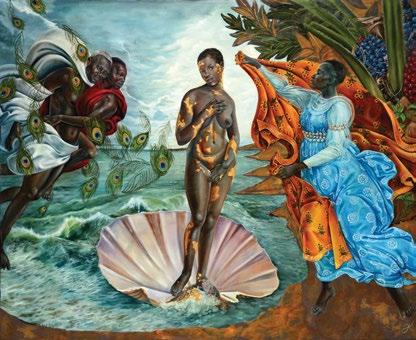 Photo: Courtesy of the artist
Photo: Courtesy of the artist









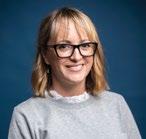
Still exhilarated from All Gaucho Reunion, I am excited to share pictures with you from what was a wonderful weekend of reconnection, Gaucho pride and continued learning. A big thank you to our alumni who came back to campus, and a special thank you to our staff and campus partners who helped make this year’s reunion a memorable event.
If you haven’t been on campus in a while, there is so much new to see — in particular, the Interactive Learning Pavilion. This new classroom building opened to students and faculty after spring break and has seating for over 2,000 people. No doubt you remember taking classes in Campbell Hall; the ILP replaces Campbell Hall as the largest classroom space on campus.
For many of you, I can imagine that walks around the lagoon shape fond memories of your time on campus. That area is currently experiencing the most beautiful superbloom and is alive with gorgeous colors of orange and purple, in part from all the wonderful rain we had at the start of the year, and courtesy of some habitat restoration work.

Finally, I am thrilled to announce the appointment of former Executive Vice Chancellor and UCSB faculty emeritus Gene Lucas ’73 as the next Alumni Board President; his two-year term as president starts in July. Gene has served on the Alumni Board since 2018 and has spent the last two years serving as vice president. I am honored to work with Gene in this capacity. He embodies what it means to be a Gaucho. I offer my heartfelt gratitude to our outgoing president, Michael Citron ’10, whose leadership has been inspiring.
Samantha Putnam Executive Director, UCSB Alumni Association Executive Director, Alumni Affairs samantha.putnam@ucsb.eduPostcard photographer. Tour guide. Podcast creator and host. Installation designer. Spin instructor. Olympic Games volunteer. International DJ. All these things comprise Jena Pruitt’s post-graduation portfolio. And she wouldn’t have it any other way.

“I double majored in political science and anthropology,” says Pruitt, cofounder of marketing and creative agency Made in Color, “and now I lead an agency. The degree you choose does not define the path that you end up taking.”
Add that to her CV, along with this accolade: a place on Forbes Magazine’s prestigious “30 Under 30” list for 2023.
“Being on Forbes’ “30 Under 30” Marketing and Advertising list was a dream that I manifested and brought to reality. It was strategic. In this instance, I was the mastermind of my own success, which I think is what we all must be,” Pruitt says. “Even into your 30s, it takes time to know yourself, to have self-awareness. Try a few things, try a lot of things. Travel if you can. Finding out what you don’t like is the ultimate way to start identifying what you do like, and to find what I call your ‘zone of genius.’ Where do you operate well? You’ve got to figure out the boundaries to find your sweet spot.”
Pruitt is clearly in her sweet spot with Made in Color (MIC). Conceived with business partner Selena Davant, the creative agency prioritizes increasing representation and access
to opportunities for creatives of color. With their fully remote and national team of talent, MIC does everything from content strategy and social media management to digital campaigns, blog writing and design. Their client list includes global consulting firm McKinsey & Co, ADCOLOR, Greystar, P/Y/T Beauty, the Sum of Us Festival, Clubhouse and Visit Oakland.
“Selena and I are both unconventional talent who have not always been selected by the industry or fit easily in traditional categories,” Pruitt says. “So we said, ok, ‘Let’s create our own category.’ Let’s create a space for other talent to call home and create with folks that look like them. Let’s create space for the people we are and naturally attract our tribe. Made in Color attracts creatives from all over the world, and I think we can be a trailblazer in the global creative industry as a safe space for underrepresented creative talent, and for underserved audiences.”
Pruitt has been creating those spaces all along. Starting college at UC Merced, she transferred to UCSB in 2012 and immediately moved to Washington D.C. with the UCDC program, interning for the National Organization for Women. Back on campus in 2013, she involved herself in everything: A.S. Program Board, the Women’s Center, the Black Student Union, an internship with Vice Chancellor Michael D. Young, ballet classes — plus summer study in Argentina — all before graduating in the summer of 2014.
“When I first got to Santa Barbara, it was a hard pivot,” Pruitt says. “I didn’t know anyone, and not a lot of people looked like me. But I grew so much. It was a catalyst for a lot of things because I was so involved. Being in college, there is still a safety net and a rich environment to plant all kinds of seeds and see which ones grow. I would strongly advise that, and to really relish in the discomfort. I’m uncomfortable and I believe anything is possible. Both can be true .”


“Motion LA started with a desire to bring together different types of people – entrepreneurs, influencers, lawyers, professionals – and network through an amazing workout. We started off small but each week, a few more people would show up. Through Motion LA, we have recreated the way people socialize through health and wellness. The way folks bond over sweating and grinding at the gym together is like no other. Everybody immediately becomes family because it is such a great way for everyone to really get to know each other. Our team has created an environment and a community in which everyone feels comfortable to be themselves.”

“My brother Avi and I launched HipTyper, a subscription service for copywriting. We believe that the storyteller is the most powerful person in the world. There are so many brands in competition, so it is necessary to differentiate ourselves. HipTyper helps clients do that by telling their story through writing – clients can request any type of copy within their subscribed word count to be completed by our pre-vetted writers. My parents are immigrants from Israel and Morocco, so we grew up speaking four languages. My family is really good at coming up with business ideas but they lack the ability to properly write a good story. Avi and I took it upon ourselves to write it for them, and about a year ago we decided we needed to do this for other people.”
“The challenges I endured throughout my academic journey were not unique, but representative of a recurring pattern among first-generation students. In graduate school, via my professional work and Ph.D. research, I studied more closely the experiences of Latinx, first-generation college students and their academic and professional aspirations. From my expertise and passion, I founded FirstGen_Resilience, which is dedicated to empowering first-generation students to reach their full potential by providing information, guidance, and motivation through specialized coaching. I especially love giving presentations and workshops to high school and college students.”
Aptitude Medical Systems, founded by JP (Jinpeng) Wang Ph.D. ’13, Scott Ferguson Ph.D. ’11 and Jackson (Qiang) Gong Ph.D. ’09, received an award up to $53.7 million from the Biomedical Advanced Research and Development Authority, within the U.S. Department of Health and Human Services, to develop diagnostics for point-of-care and at-home use.

Secondhand apparel online retailer Beni, co-founded by Celine Mol ’17 ’19, raised $4 million in seed funding for a browser extension that works to let consumers easily browse listings for resale items while they’re shopping online.



For as long as Liz Montaño can remember, sports have been central to her life. Watching, playing, learning, aspiring to reach the highest level, she has now achieved that — not as a player but as a front office executive. Montaño is the chief operating officer of the National Hockey League’s Arizona Coyotes.

She landed the role by way of a few other professional paths: venture capitalist, business consultant, start-up entrepreneur. And she did so more than 20 years after she first saw, and was captivated by, the possibility of a business career in sports. As part of UC Santa Barbara’s UCDC program during her junior year, Montaño interned with the NBA’s Washington Wizards.
“I fell in love with a consistent theme of impact,” she recalls of the experience. “Sports is impactful in so many ways, from the memories friends and families make attending games to watching the athletes who inspire the next generation to the efforts made by each franchise to give back and take part in community relations. Having a career in sports, you can make a positive difference in so many lives, and I go to work loving my job each and every day.”
The daughter of a longtime UCSB staff member — mom Rose Quimby worked in the registrar’s office for 34 years — Montaño literally grew up on campus. She started her undergraduate years as a Gaucho but transferred and finished her bachelor’s degree in economics at Eastern Kentucky University. She returned to UCSB for her graduate work, earning a master’s degree, also in econ.
“At UCSB I felt an amazing sense of support — from both my peers and the faculty — personally, academically and in my career,” she says. “In fact, my first job out of college was through a referral from my professor during graduate school. Experiences like those gave me a feeling of gratitude and drive to give back in any way I can, to help elevate others. Additionally, the relationships I built while on campus instilled in me the importance of networking, even at an early age, and that has continued to pay dividends throughout my professional career.”
What advice would she offer those seeking a career in professional sports?
• “Get involved early. There are many options in sports — sales, marketing, strategy and analytics, to name a few. Experience as much as you can, ensuring that you are always learning, developing and growing along the way.”
• “Don’t let underrepresentation stop you from pursuing your passion. The sports industry is still predominantly male, but now more than ever, there are women making incredible strides at all levels and continuing to open doors. Know that you bring a unique perspective that should be valued — not only in sports but by any employer.”
• “Stay creative, and innovative, and always look for ways to make positive change. Consider spending part of your career outside of sports and keep a watchful eye on the dynamics of various industries, both domestic and abroad. There are many successful practices and strategies that can be applied to the business of sports.”
“I found that staying in touch with peers and contacts, communicating passions and always giving your best in every position (people do remember!) helps open doors. Above all, success comes from believing in yourself and having confidence in your ability to excel at any role.”
Ever since he was a teenager surfing along the Los Angeles County coast, Bruce McFarland has been on a mission to find the perfect wave. More than 40 years after graduating from UC Santa Barbara with bachelor’s and a master’s degrees in mechanical engineering, McFarland is now creating those ideal waves himself and, with his wife, Marie, is bringing them to surfers around the world.

“Surfing is growing in popularity, but access to the ocean and more waves is not,” says Bruce. “We decided to find a way to meet that demand and create great surf.”
“We wanted to create surfing venues,” says Marie, who met Bruce on campus while completing her bachelor’s degree in mechanical engineering. “It’s incredible to see the joy and satisfaction they’re creating for surfers worldwide.”
The voyage to develop the necessary technology began in 2000, after the couple established their careers in the aerospace industry and had three children. Envisioning a surfable standing wave, Bruce started by building a small-scale model in his backyard shed. Once he got it to work, he invested more money to build a larger-scale model and a prototype.
Almost 20 years later, the McFarlands have received more than 50 U.S. and international patents, and their company, American Wave Machines (AWM), has emerged as a global leader in artificial waves. Their first patented technology, SurfStream, is now featured in 15 facilities worldwide. Their second, PerfectSwell, is featured in surf pools operating in Japan, New Jersey, Texas, and the largest, a 5-acre pool in Brazil. The Olympic surf teams from the U.S. and Japan practiced at the PerfectSwell in Japan leading up to the 2022 Tokyo Olympics.
Artificial waves are produced by an air-over-water system, in a process that’s similar to how a piston acts in a car engine, transforming heat into mechanical energy.
“You have a chamber connected to a pool that is separated by a wall that has water on both sides,” Bruce says. “You create waves when the water travels under the wall to get into or out of the pool, which happens when you add pressure into the chamber.”
His technology does not create just any wave, though. It produces one that he describes as having “the juice where the surfer needs it the most,” the kind that he spent years chasing.
“Through software that we developed, we can control multiple chambers and create waves that peel like a point break,” Bruce says, referring to the perfectly formed waves that are seen regularly down the coast from UCSB at worldfamous surf spot Rincon Point. With his technology, they can engineer the ride length, create multiple barrels in one wave and design how the wave breaks.
The McFarlands credit their time working with computeraided technology in the aerospace industry, and their UCSB education, for their ability to ride an artificial wave of success.
“Learning the fundamentals of engineering, physics, motion and gas behavior allowed me to manage the company’s development of in-house simulations needed to optimize design, overcome obstacles and find solutions,” says Bruce. “We owe a lot to UCSB, including finding one another.”
Above: Bruce and Marie McFarland

...we can control multiple chambers and create waves that peel like a point break
Bruce McFarland
Education:
B.A. Communication, UC Santa Barbara
M.A. Counselor Education, San Jose State University
Interests & Specialties:
Goal setting
Person-centered counseling approach

Mindfulness meditation
When Luther Richmond took a job at UC Santa Barbara, it meant returning to the city where he grew up and to the campus where he earned his bachelor’s degree. That he landed, specifically, in a program that had helped him so much as a student? That’s a homecoming trifecta.
Today Richmond, a third-generation Santa Barbara local, is a counselor in the university’s Educational Opportunity Program (EOP), where he’d once sought guidance himself while applying for graduate schools. He also directs the EOP’s Summer Transitional Enrichment Program, which assists first-year, first-generation EOP students with their transition to university life through a weeklong residential stay on campus before their first quarter. And he has helped to coordinate the American Indian & Indigenous Cultural Resource Center.
“In my counseling, I help students navigate a variety of issues related to student life,” says Richmond, who majored in communication at UCSB, then earned a master’s degree in counselor education at San Jose State University. “We take a holistic approach to our counseling, which means that in any given appointment, the student and I may touch on academics, finances, time management, relationships and other personal issues. We reframe perspectives and review studentinitiated options for resolutions to best address the issues for the individual.
“I provide mentorship, counseling and cultural connection support to help improve first-generation students’ family socioeconomic status and build long-term goals for the individuals,” Richmond adds. “I love what I do at EOP; all of this work is very rewarding to me in different ways.”
His work, and how he feels about it, were perhaps foretold halfway into his undergraduate tenure, when he worked as a mentor for a campus-based initiative that focused on supporting local K-12 Native American students. It proved to be pivotal for his future development as a counselor.
“I took a sports-based approach to coach these individuals and their families in their journey toward higher education,” he recalls, adding that the experience crystallized for him “what I valued, what motivated me and what type of work would make me feel rewarded and purposeful. Going into my senior year, I felt more confident that I had the intangibles needed to become a good counselor.”
Taking that time to reflect is something Richmond advises for students he works with through EOP — and for all students, he says.
“What experiences do you want to have?” he asks. “What do you want to improve on? What do you want to learn more about? College goes by so fast that if you don’t reflect intentionally, it can be difficult to get to where you want to go and be who you want to be.”
Balancing work and life
School techniques and perspectives
Health and happiness
“ I love what I do at EOP; all of this work is very rewarding to me in different ways. ”
It’s been a whirlwind, to use her words.
Such are the professional life and times of Vanessa Valdivia ’10, whose career in the public sector — 12 years young, but rich with experience — whirled her into the White House. She was named press secretary for First Lady Jill Biden, and special assistant to President Joe Biden, in 2022.
This after working her way up the ranks, from a regional organizer on Hillary Clinton’s 2016 campaign to press secretary for U.S. Senator Martin Heinrich (D-New Mexico) to deputy national press secretary on the 2020 presidential campaign of U.S. Senator Cory Booker (D-New Jersey). Prior to joining the White House, she was working as communications director for U.S. Senator Alex Padilla (D-California).
“I’ve been so lucky to work for some truly dedicated public servants and to advocate for causes and people I believe in,” says Valdivia, a California native who grew up in the Antelope Valley outside Los Angeles. “As the daughter of immigrants, I never dreamed I’d work in the U.S. Senate – let alone work at the White House. It’s an honor of a lifetime, and I’m thrilled to be working for an incredible first lady.”
The groundwork was laid for Valdivia during her years at UC Santa

Barbara, where she double-majored in communication and global studies. Involving herself early by pursuing internships and other opportunities in media and journalism, she quickly fell for the power of storytelling and the craft of narrative to influence and inform. “Paired with the writing and analytical skills I gained through my coursework,” she says, “my experience at UCSB helped me build a strong foundation for the work I’ve done in government and political communications.”
Valdivia was an active volunteer, both for political campaigns and for after-school tutoring organizations, before going all in on the public sector as a career. From Nevada to New Mexico to Colorado to Michigan, she crisscrossed the nation as a campaign worker before settling in Washington, D.C. She hasn’t looked back, but she has stayed true to her passion for learning, connection and growth.
“It’s been a whirlwind,” she says. “One of the best things about this work is being able to see the impact that policy has on people’s lives and having the opportunity to learn from the communities you work in. Success is not just about what you do for a living, it’s about the impact you have and the relationships you build. To me, that’s meant mentoring young Latinas and women of color. It’s meant being intentional with how I build and manage teams. It’s also meant working on teams and for people I really believe in.
“You have to give yourself space to explore and learn,” Valdivia adds, “and often times you discover your next job by accident or build the best professional relationships by allowing yourself to take risks.”
Lacking any sort of master plan for his future as he neared graduation from the College of Creative Studies, Andrew Freund ’90 was intrigued by an ad in the Daily Nexus for a teaching opportunity in Japan. He mailed in a résumé and was granted an interview, which led to a job offer. He soon found himself living in Tokyo at age 19, teaching English to top business executives despite having no formal training in speaking Japanese.
“When I lived in Japan, I was an introverted teenager who was nervous in public. I pretty much stayed in my room and didn’t go out much,” says Freund. “But one day, I was looking at a magazine about things to do in Tokyo and there was an entry in their event calendar for a pro sumo tournament. Being naïve, I went right when the event started and got the cheapest seat.” He describes sitting on a woven tatami mat in the nosebleed section for nine hours, as the tournament progressed from the low-ranked morning matches to the highly anticipated evening competitions, the arena slowly filling with spectators. “I remember when I was watching the matches, I got into it viscerally,” says Freund. “I could almost feel the action that I wanted to take in my body.”
Moving back to Southern California from Japan, Freund developed a passion for sumo wrestling that led to a career. As he continued to teach around Los Angeles, he started practicing, competing and coaching sumo, going on to establish several sumo organizations, including the UCLA Sumo Club, the first and only officially recognized university sumo club ever in the U.S. A winner of multiple National Sumo Champion titles, Freund also created an event for high-caliber international athletes called the US Sumo Open, which has been running annually since 2001. Featuring national and world champions from over 40 countries, and the first major tournament to include female competitors, it is the largest and longest-running annual sumo competition outside of Japan.
The tournament is run by USA Sumo, where Freund is director. Over the past two decades, he has traveled to 40 countries and produced more than 800 events. He is a longtime
GLOBAL GAUCHO 60 Spring/Summer 2023 UC SANTA BARBARA MAGAZINE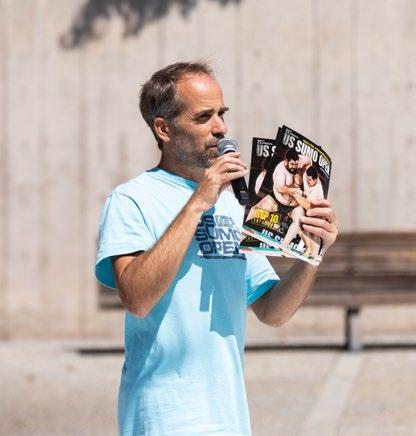
commentator and voice of Japanese professional sumo (Grand Sumo), including as live house announcer for Grand Sumo tournaments in Las Vegas and Los Angeles, for audiences of more than 50,000. For many years, he’s been a color commentator for global TV broadcasts of Grand Sumo via the Fight Sports Network.
“What I have been able to do is take the key cultural aspects from sumo and present them in a way that Americans appreciate,” says Freund. “On a typical day, I’m in talks with multiple events and shoots for commercials, television and YouTube. Or I’m organizing events and shows, which we do around the world. I think I’ve been able to do so much because I’m still having fun. I also practice sumo and coach, every week. That physical, visceral connection to the sport hasn’t gone away.”
As a student at UCSB, so singularly devoted was Andrew to his studies that he enrolled in 48 units one quarter and 52 units the following quarter (though CCS now limits students to enrolling in no more than 95.5 units, there was no limit in the 1990s. The average number of units for today’s undergraduate is 16). “I didn’t know what I was doing,” he says of those days. “I just went in whatever direction felt right at the time.” He graduated in two years.
Earlier this academic year, Andrew visited his alma mater, bringing three former sumo champions to Storke Plaza for a showcase match and public demonstration of the sport. He praised the university — and the College of Creative Studies specifically — for inspiring him to pursue a somewhat unconventional but ultimately rewarding career path.
“I think UCSB was a great place for me to be,” says Freund, whose four younger siblings also attended UCSB (his brother Ernest ’97 ’00 is now a lecturer in the Department of Physics). “I am so glad I went there because it felt — and still feels — vibrant and active. At CCS especially, people are used to doing things unconventionally, and I think that gave me encouragement to follow something I loved, which grew into something beyond what I ever could have imagined.”
conveniently located in the heart of campus with lagoon and ocean views
conveniently located in the heart of campus with lagoon and ocean views
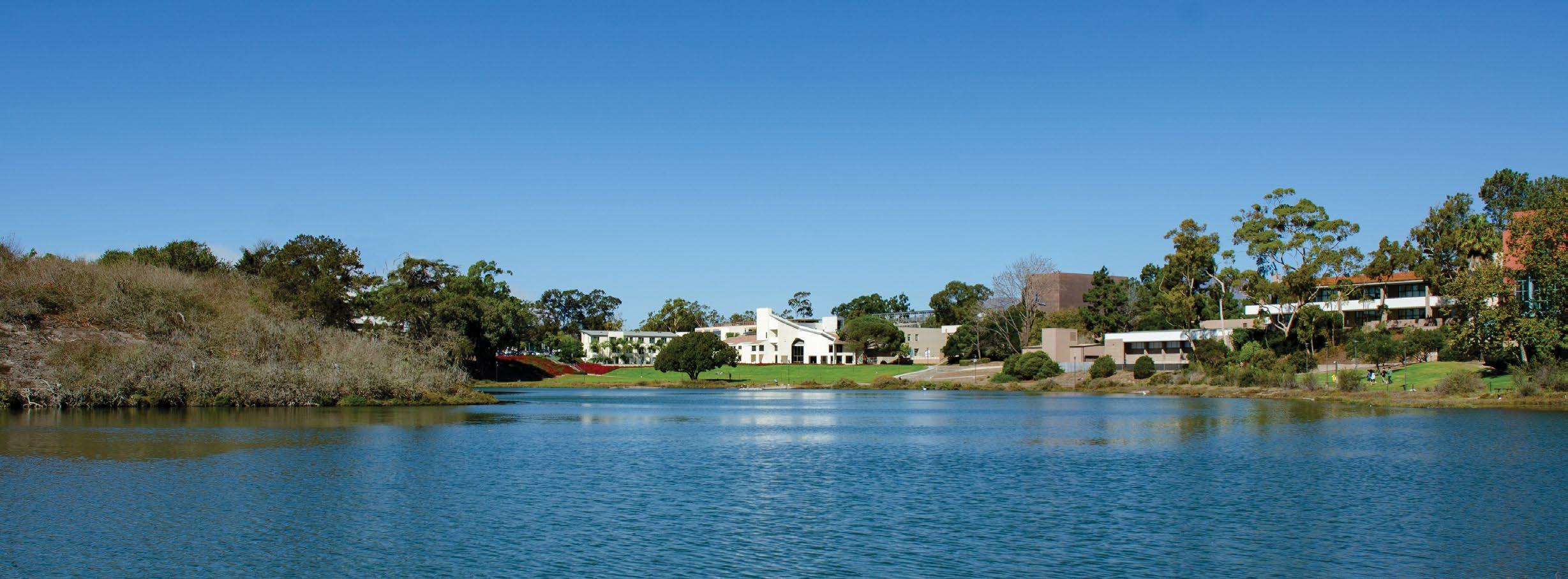

STAY
STAY
Flat rate; no extra fees. Includes light pre-packaged breakfast bites for 2 guests per room, per day.
Flat rate; no extra fees. Includes light pre-packaged breakfast bites for 2 guests per room, per day.



FINE-DINE
FINE-DINE
MEET
MEET
JOIN
JOIN




Lunch setting with fresh, local and sustainable menu selections.
Lunch setting with fresh, local and sustainable menu selections.


T-F | 11:30am-1:30pm
T-F | 11:30am-1:30pm
Outdoor terrace and state-of-the-art gathering spaces with full-service catering options.
Outdoor terrace and state-of-the-art gathering spaces with full-service catering options.
Converse, connect, celebrate. Membership opportunities with special discounts and benefits.
Converse, connect, celebrate. Membership opportunities with special discounts and benefits.
Sanaz Toossi ’13 won the 2023 Pulitzer Prize for Drama for her play “English,” in turns comic and tragic, about four adult Iranian students studying for an English language exam in a storefront school near Tehran.

Kevin Del Aguila ’91 was nominated for a Tony Award for Best Featured Actor in a Musical for his role as Osgood in “Some Like It Hot,” which opened on Broadway in December 2022.

Joseph Acaba ’90 was promoted to chief astronaut at NASA’s Johnson Space Center in Houston; he previously was selected to be part of the Artemis Team that will send astronauts to the moon in 2024.
Jordan T. Camp MA ’07 Ph.D. ’11, an assistant professor of American studies at Trinity College, was appointed a 2023-24 fellow of the University of Connecticut Humanities Institute, where he’ll work on his new book, “The Southern Question.”

Michelle Iwasaki ’03 ’04, an academic coach at Kalihi Kai Elementary School in Honolulu, Hawai’i, won a $25,000 Milken Educator Award for empowering Honolulu teachers and raising achievement for students.
Greg Collins ’73 retired from the Visalia City Council. He was the city’s youngest council member at 25, its youngest mayor at 37 and its longest-serving council member at 31 years.
Luca Foschini, Ph.D. ’12, co-founder and former chief data scientist of health tech company Evidation Health, was appointed president of Sage Bionetworks, a biomedical research nonprofit, to lead the organization’s strategy and operations while continuing to expand Sage’s impact on the nature of scientific discovery.
Alexandra Letzel ’08 was named partner at Loeb & Loeb LLP in Los Angeles.
Meagan (Christiansen) Bainbridge ’01, a shareholder at Weintraub Tobin, where she is a member of the labor and employment and litigation groups, was selected to participate in the Leadership Sacramento Class of 2022.
Konstantine (Gus) Drosos ’92 was appointed general manager of Palmer House, a Hilton Hotel, in Chicago, having previously served as general manager of Hilton Chicago O’Hare Airport and of Embassy Suites Chicago Downtown Magnificent Mile.
Skip Schumaker ’01 was named general manager of the Miami Marlins, becoming the first Gaucho to ever serve in the role in Major League Baseball.

On the page
Ed Conley ’82, a former FEMA responder and NATO adviser, published “Promote the Dog Sitter: And Other Principles for Leading During Disasters” (Lioncrest Publishing, 2022), sharing 10 proven principles for acting decisively and leading dynamically throughout any disaster.

Lynne Cox ’79 best-selling author of “Swimming to Antarctica,” published “Tales of Al: The Water Rescue Dog” (Knopf, 2022), about a Newfoundland puppy who grows up to become a daring rescue dog and super athlete — part of Italy’s elite, highly specialized corps of water rescue dogs who swoop out of helicopters and save lives.

Meghan Joyce Tozer, MA ’12, Ph.D. ’16 published her first novel, “Night, Forgotten” (Wattpad WEBTOON Book Group, 2022), a psychological thriller about a young woman whose life changes in an instant, and nothing is ever the same.


Brian C. Wilson ’96 published the book “The California Days of Ralph Waldo Emerson” (University of Massachusetts Press, 2022), which traces the “Sage of Concord’s” journey across the American West in his final years as he takes in breathtaking vistas along the Pacific Coast, spends days with a young John Muir around Yosemite, soaks up Napa Valley’s hot springs, explores San Francisco’s Chinatown, and encounters a diversity of communities and cultures that would challenge his Yankee prejudices.
Monica Duffy Toft ’90, a professor of international politics and director of the Center for Strategic Studies at The Fletcher School at Tufts University, published “Dying By the Sword: The Militarization of U.S. Foreign Policy” (Oxford University Press, 2023), which explores the United States’ evolving foreign policies from the founding era to the present in order to ring the alarm on its increasing reliance on “kinetic” global diplomacy.

Zeynep K. Korkman Ph.D. ’11, an assistant professor of gender studies at UCLA, published “Gendered Fortunes: Divination, Precarity, and Affect in Postsecular Turkey” (Duke University Press, 2023), which examines Turkey’s commercial fortune-telling cafes, where secular Muslim women and LGBTIQ individuals can navigate the precarities of 21st century life.

Murray Sinclair ’72, best known for his Ben Crandel mystery series, has published “F. Scott Fitzgerald: American Spy” (Eclectic Books, 2023), an illustrated novel that explores whether Fitzgerald was recruited by an agent of the French Resistance in Hollywood to assassinate the premier of Vichy France, Marshal Philippe Pétain, in 1940.
Gregory Desilet ’72 published “The Enigma of Meaning: Wittgenstein and Derrida, Language and Life” (McFarland Press, 2023), focusing on humanity’s first technology — language — by placing the views of two of the greatest philosophers of the 20th century in direct confrontation on the topic of language/sign communication.
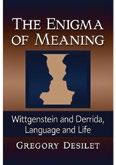
As a teenager, Jada Alexander fell in love with the ocean. It was a frustrating long-distance relationship at first, though, since she lived more than an hour from the nearest beach.
As soon as she got her driver’s license, she was heading west from Hemet, her hometown, to the beaches near Oceanside as often as possible. “I taught myself to surf and often would stay to watch the sunset on the water,” says Alexander, now a thirdyear environmental studies major. “I fell into environmentalism by falling in love with the environment around me.”
Alexander knew that she was drawn to the ocean, but she wasn’t quite sure how to translate that to academics until she arrived at UC Santa Barbara. She heard about an opportunity to visit the Moorea Coral Reef Long Term Ecological Research Site in French Polynesia and applied — and was accepted — without ever having done any formal marine research.
“I hated science in high school,” Alexander recalls now. “(In Mo’orea), I started doing research without fully comprehending it was true science. When you’re younger, it feels like being a scientist is one thing and then you learn that it’s actually a lot of different things.”

After the trip, Alexander decided to devote herself to three interconnected causes: environmental education, inspiring those who are intimidated by science, and increasing diversity in marine research. She now works in UCSB’s Ocean Recoveries Lab with Professor Adrian Stier and is starting her own independent research project to explore how sea urchins respond to heat stress.
Alexander has done work for organizations like The Sea League, which increases diversity and safety in ocean sports, and Black in Marine Science, which encourages young Black people to enter the marine research fields. She hopes to get a Ph.D. in marine science after she completes her undergraduate degree.

“UCSB is a space where people are ready to uplift you, so that you can become who you want to be,” Alexander says. “This university comes with a very large stage, and I am very grateful to be here.”
Inspired by the opportunities she has been given, Alexander says she is looking for ways to be a mentor to students who feel the same powerful pull from the ocean. “Something that has really encouraged me is that repeatedly, people have stretched out their arms to me,” she says. “I want to do that for the next person.”
The chance to reciprocate some of the care she has received from marine environments over the years is another big motivator. “I want to give back some of the safety and comfort that the ocean has given me,” Alexander says. “So many big choices in my life have been due to my relationship to the water.”
“I fell into environmentalism by falling in love with the environment around me.”
Santa Barbara, CA 93106-1120
Wherever we are, we share a common experience as UC Santa Barbara alumni, friends, family, faculty, staff and scholars. The UC Santa Barbara community is worth celebrating, and we loved seeing the outpouring of support and pride on April 13-14 for Give Day 2023! Your generosity helps make the UC Santa Barbara experience possible.
$6,158,930 raised
2,328 gifts
174 funds supported

Over 45% of gifts made were from alumni
Join us again for our next flagship digital fundraising event: UCSB Give Day 2024!
University of California, Santa Barbara Alumni Association